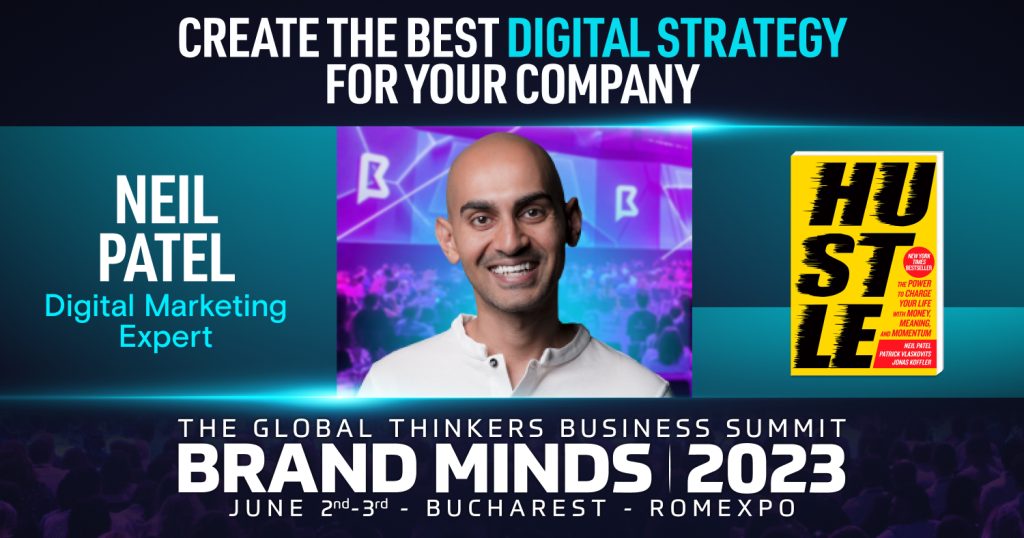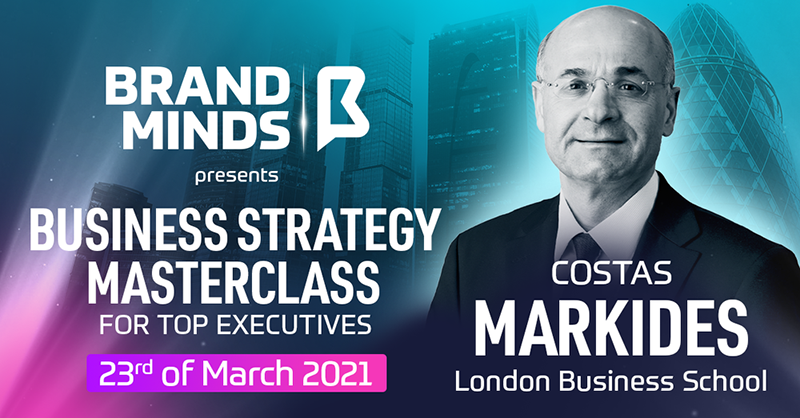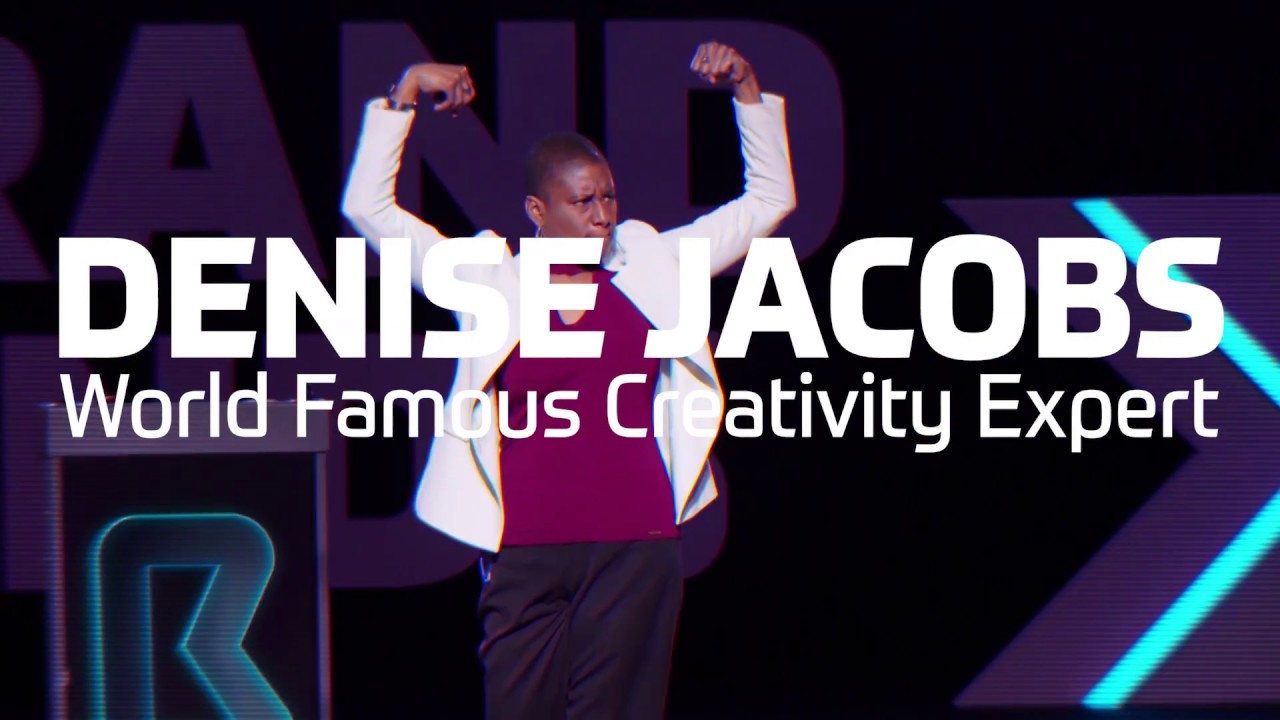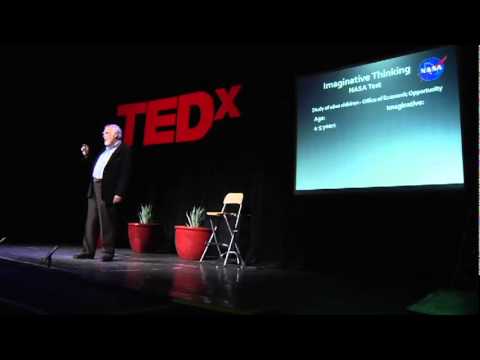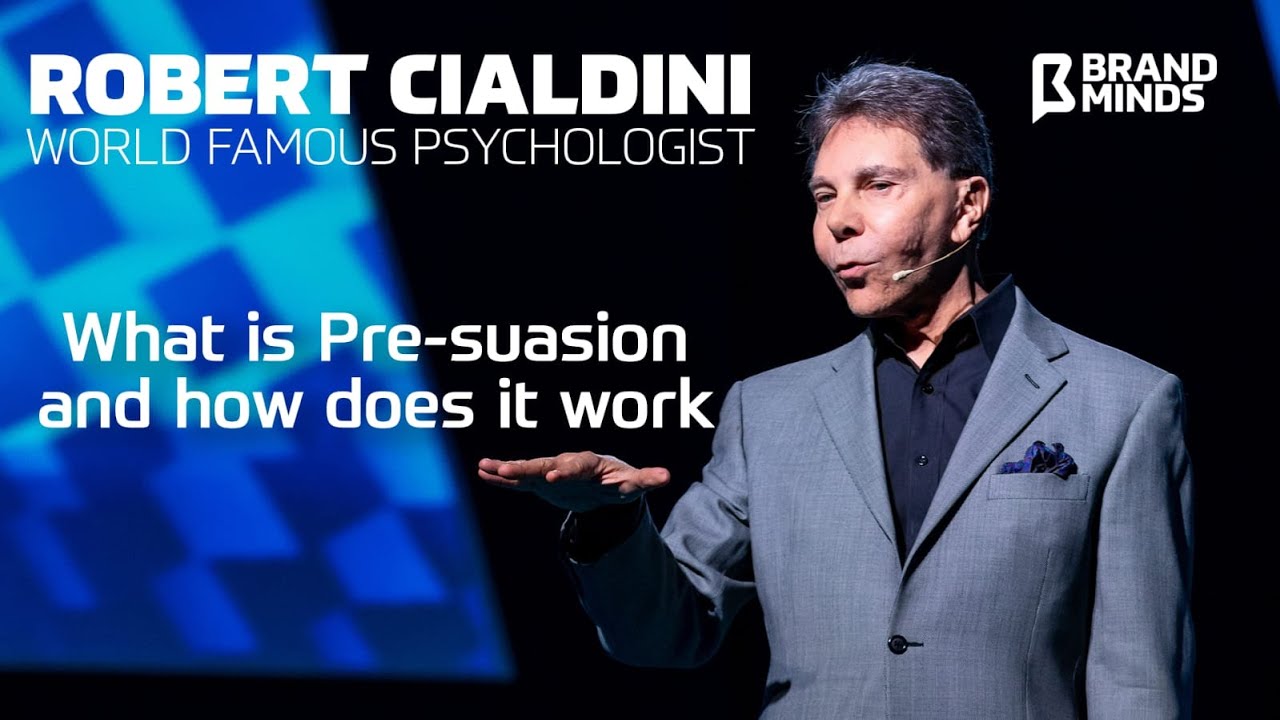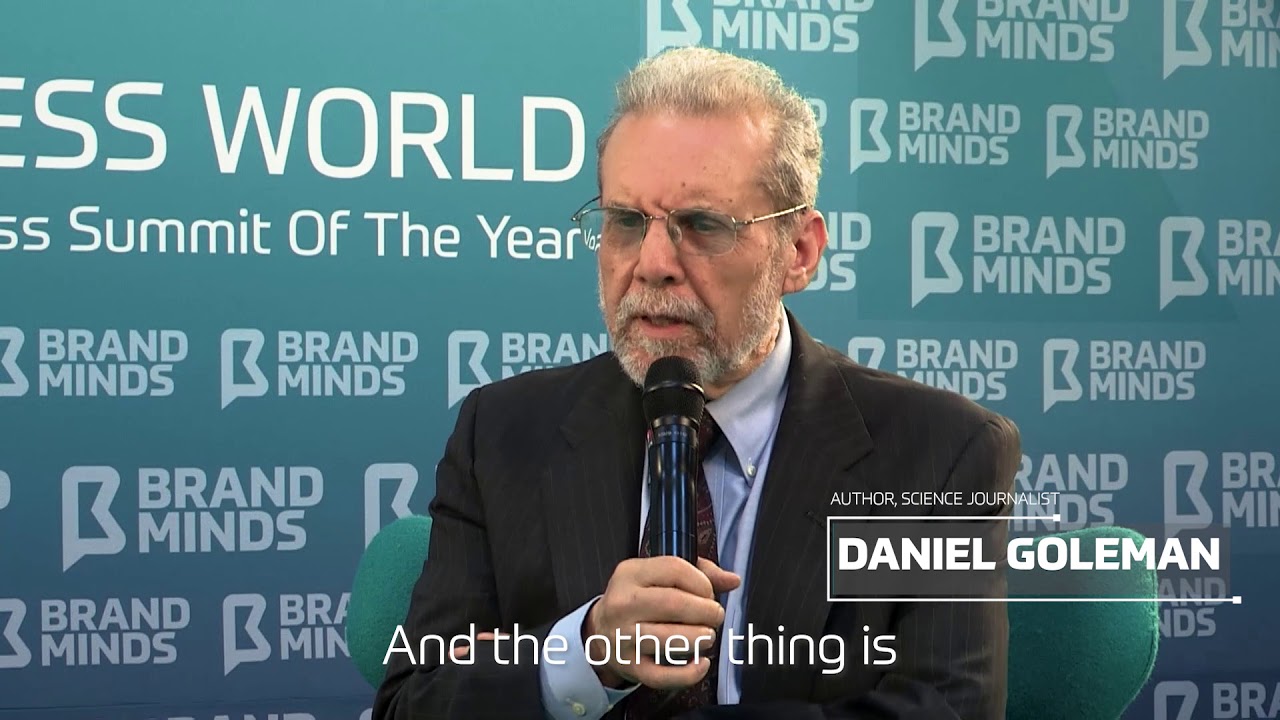7 powerful viral LinkedIn templates for your posts
Looking to build virality into your LinkedIn posts?
Here are 7 templates to draw inspiration from:
Viral LinkedIn Template #1 – Do extensive research and give the result to your audience
Offer your connections on LinkedIn access to a spreadsheet of tools, resources or insights that they can use to achieve various goals. They can be checklists, lists of suppliers, lists of digital platforms, statistics or anything else you can think of that is of value to your connections.
The success of this template lies in the number – the bigger the better.
Also, ask your connections to drop a comment if they want the list so you can send them a copy. This is a great organic way to build engagement on your post so the LinkedIn algorithm can give it a boost.
Examples:
100+ video editing software providers. Drop a comment and I will send you a copy!
200 free digital tools for project managers. Drop a comment below and I’ll send you a copy!
100 insights you can pull from Google Analytics. Tell me you want the list and I’ll send you a copy!

Viral LinkedIn Template #2 – Grab them, shake them, show them the light
This template requires a little reverse engineering and taking a different point of view of a situation all your followers can connect with.
Example:
Traditional leadership is failing. Quiet quitting is on the rise. And that’s a good thing. Let me tell you why.
Let’s analyse the example.
Grab your followers’ attention with a situation/challenge/problem that they are working to overcome or they can all relate to.
Introduce the result with the highest impact arising from this situation and flip it on its head.
Look at the consequence from a different standpoint and write what you see. Be insightful, mention statistics and include your solution organically.
Traditional leadership is failing. Quiet quitting is on the rise. And that’s a good thing. Let me tell you why. The C-suite is finally understanding that the needs of employees have changed. That they need to invest in upskilling the company’s managers. That they need to transform and update operations. That they need to change the decision-making process. Or get out-competed. And die.

Viral LinkedIn Template #3 – Fill in the blanks
Invite your connections to share insights and knowledge on a specific topic.
Examples:
You know they are a wrong match for your team if they….
You know their investor pitch will fail because they ….

Viral LinkedIn Template #4 – The downside you didn’t know about
Make a list of all the ways a popular tool, platform or tactic fails to accomplish user’s goals, then offer your solution.
Examples:
Here are 20 ways Google Analytics fails to track campaign success.
Here are 10 reasons you should stop spending money on outbound marketing.

Viral LinkedIn Template #5 – I was shocked when he/she revealed the secret
Refer to a person of authority (subject matter expert, market leader, highly experienced professional) and list their most valuable insights.
Examples:
An investor with 30 years of experience told me the ingredients of a successful business. I was surprised when he revealed these secrets. Here is what he told me:
An HR director working for a billion-dollar business told me what I should do to build a successful company culture. I was amazed when she revealed this little-known strategy. Here is what she told me.

Viral LinkedIn Template #6 – Take your audience through a step-by-step process
This template is about teaching your connections how to complete a task or achieve an objective by applying a simple process.
Use adjectives to describe the process and grab attention: easy, simple, essential, effortless, unique, little-known, verified, endorsed, step-by-step, no-hassle, successful etc.
Mention what they achieve in the first sentence.
Examples:
Create the best Facebook campaign today. Here’s a verified 5-step process.
Write viral LinkedIn posts. Here’s a simple 3-step process.

Viral LinkedIn Template #7 – The ‘I can’t live without’ list
Recommend a number of tools essential in your job and frame them in such a way that conveys how valuable they are to you and your work.
Examples:
20 Chrome extensions I can’t live without.
5 daily apps I can’t do my job without.
6 positive affirmations I can’t start my day without.
10 sales habits I couldn’t be successful without.

9 social media apps paying their content creators
Competition among social media apps is fierce. Every platform is looking to keep their users engaged as long as possible and one way to achieve this is to provide them with the best from content creators. Some social apps began paying their most talented content creators last year, some started this year.
9 social media apps paying their content creators
1. FACEBOOK – in-stream ads, fan subscriptions, branded content and subscription groups
On March 11, 2021, Facebook announced that the platform will help Content Creators Diversify Revenue on Facebook.
From 2019 to 2020, the number of content creators earning the equivalent of $10,000 USD per month grew 88% and content creators earning $1,000 per month grew 94% (Facebook).
Here is how content creators can monetize content on Facebook:
In-stream ads
In-stream ads help content creators earn money by including short ads before, during or after their videos.
Facebook will automatically identify natural breaks in content to place the creator’s ads, or the creator can choose placements.
The creator’s earnings are determined by the number of video views and who the advertisers are.
Fan subscriptions
Fan subscriptions allow the creator’s audience that cares most about their Page to directly fund it through monthly, recurring payments that the creator sets.
The creator can identify supporters by the special badge the platform provides them in comments.
Facebook’s recommendation to keep the fans engaged is to reward them with perks such as exclusive content and discounts.
Branded content
Facebook helps creators generate revenue by publishing content that features or is influenced by a business partner.
Brands want to work with content creators and their audiences.
To make this easier, safer and more impactful for both parties, Facebook created the Brand Collabs Manager, a tool which enables the creator to find and connect with brands.
Subscription Groups
Subscription groups empower group admins to sustain themselves through subscriptions, thus enabling them to further invest in their communities.
We’re especially focused on short-form video monetization. In the coming weeks, we’ll begin testing the ability for content creators to monetize their Facebook Stories with ads that look like stickers and receive a portion of the resulting revenue.
Yoav Arnstein, Director, Facebook App Monetization
2. TWITTER – the Tip Jar
On May 6, 2021, Esther Crawford, Senior Product Manager at Twitter announced a new feature called Tip Jar.
What is Tip Jar?
“Tip Jar is an easy way to support the incredible voices that make up the conversation on Twitter. This is a first step in our work to create new ways for people to receive and show support on Twitter – with money.”
Tip Jar is a new way for people to send and receive tips. The accounts that enabled this feature have a Tip Jar icon next to the Follow button on their profile page.
How does the Tip Jar work?
By tapping the icon, a dropdown of payment services or platforms unfolds and the user selects whichever they prefer. The services available today include Bandcamp, Cash App, Patreon, PayPal and Venmo.
3. INSTAGRAM – Badges in Live and IGTV Ads
Badges in Live
In May 2020, Instagram announced new ways for creators to make money.
To give fans another way to participate and show their love towards a particular content creator, Instagram introduced badges that viewers can purchase during a live video.
With badges, creators can generate income from the content they’re already creating. Badges will appear next to a person’s name throughout the live video.
Fans who have purchased badges in Live will stand out in the comments and unlock additional features, including placement on a creator’s list of badge holders and access to a special heart.
IGTV Ads
IGTV has become a powerful place for creators to connect more deeply with their fans, pilot new projects and share their lives and talents.
With IGTV ads, they have another new way to earn money from the content they work so hard to produce.
4. YOUTUBE – $100M YouTube Shorts Fund
In May 2021, YouTube announced the launch of YouTube Shorts Fund, a $100M fund distributed over the course of 2021-2022.
Anyone is eligible to participate in the fund simply by creating unique Shorts that delight the YouTube community.
Each month, YouTube will reach out to thousands of creators whose Shorts received the most engagement and views to reward them for their contributions.
The video platform said the Shorts Fund is a top priority and the first step in its journey to build a monetization model for Shorts.
We’ve paid more than $30 billion to creators, artists, and media companies over the last three years, and we remain deeply committed to supporting the next generation of mobile creators with Shorts.
YouTube
5. TIKTOK – $1B Creator Fund
The Creator Fund gives TikTok’s best and brightest the opportunity to earn money with their creative talent.
Within 3 years, TikTok is expecting the fund to rise to a total of $1 billion.
The fund will extend to further markets across the globe so that even more creators will be given the opportunity to earn from their hard work and creativity.
Beginning March 25, 2021, creators will need at least 100K authentic video views in the last 30 days to be eligible to join the Creator Fund.
6. Snapchat– $1 million a day in Spotlight
Snapchat is willing to pay $1 million a day for good content from creators on its platform.
Snapchatters are invited to submit their top snaps to Spotlight and if the snaps go viral, the company is paying the creators a lot of money.
Snapchat debuted Spotlight in November 2020 and thousands of creators are already getting paid small fortunes.
Snapchatter Cam Casey, a TikTok star with over seven million followers, has been paid nearly $3 million by the company for content that went viral.
7. Pinterest – $500K Creator Fund
In April 2021, Pinterest hosted an event focused on its creator community. At this event, Pinterest announced the launch of a $500,000 Creator Fund.
The fund is specifically focused on elevating creators from underrepresented communities in the United States. It will offer a combination of creative strategy consulting and compensation for content creation and budget for ad credits.
Creator Inclusion Lead Alexandra Nikolajev said the company worked with “eight emerging creators across fashion, photography, food and travel, and will be identifying 10 more creators in the next few months for the next cohort.” (source)
8. LINKEDIN – Creator Program
In May 2021, Daniel Roth, VP and Editor in Chief at LinkedIn announced a program to support creators around the world, enabling them to have an even bigger impact and better experience on the platform.
No details were further disclosed and also we have no information on whether or not this program will pay LinkedIn Creators.
9. CLUBHOUSE – Clubhouse Payments and The “Creator First” Accelerator Program
In April 2021, Clubhouse began rolling out Payments—the platform’s first monetization feature for creators on Clubhouse. All users will be able to send payments and 100% of the payment will go to the creator, Clubhouse will take nothing.
This will be the first of many features that allow creators to get paid directly on Clubhouse. We are excited to see how people use it, and to continue working hard to help the amazing members of the Clubhouse community grow and thrive.
TikTok
Before the Payments feature, Clubhouse launched the Creator First Accelerator Program.
The program’s goal is to help support and equip emerging creators with the resources they need to bring their ideas and creativity to life.
The platform’s support includes a wide range of services from sending iPhones to the creators to helping them promote their shows.
The program also provides the creators with a monthly stipend and matches them with brands so they can turn their ideas into profitable creative endeavors.
What are the 4 types of innovation?
Innovation – the #1 soft skill companies are looking for
Last year, the World Economic Forum in collaboration with LinkedIn released its 2025 Future of Jobs report.
This report maps the jobs and skills in the next five years.
As you can see below, innovation ranks at #1 in the Top 10 skills employers are looking for in an employee in 2025.
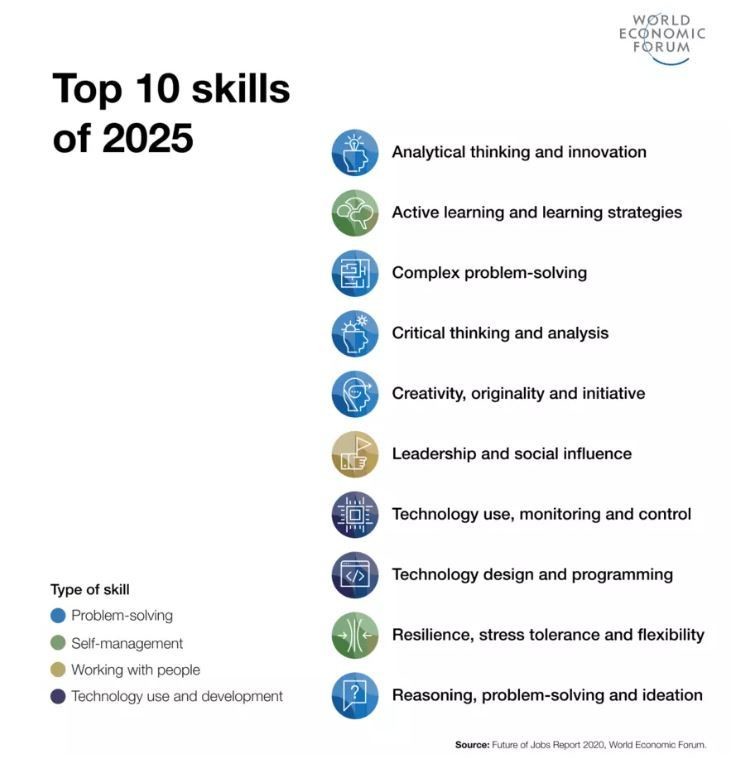
In 2020, the top most sought-after skill was creativity.
Why are employees expected to have analytical thinking and innovation skills? Why is creativity not enough?
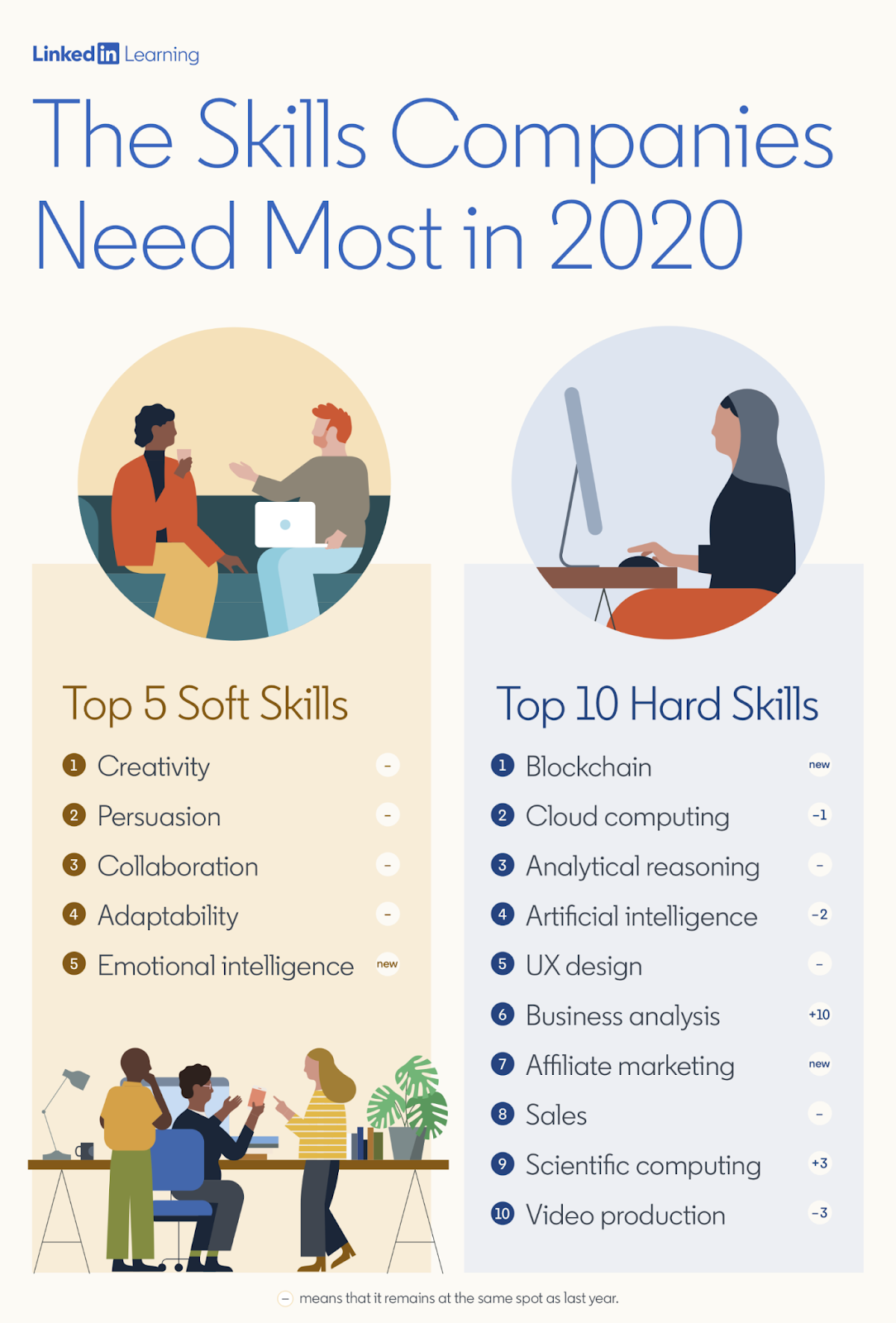
The World Economic Forum report answers this question with an in-depth list of key insights which I encourage you to read.
But if you want the short answer, here’s my conclusion.
The future of work is about automation and robots. The report found that by 2025, the time spent on current tasks at work by humans and machines will be equal.
While an AI software can do creative work (see the AI writing news or the AI doing movie trailers), software and automation robots cannot be innovative.
Innovation requires other skills besides creativity. Read on to find out what these skills are.
If innovation is not (only) creativity, then what is it? Is it a process? Is it a mindset?
First let’s establish the difference between creativity and innovation.
Creativity vs Innovation
On this subject, the best definition of innovation as opposed to creativity I could find is the following:
The key difference between creativity and innovation is that the first refers to generating a fresh and new idea, whereas the second implies initiating new service, product or invention to the market, which was not introduced before.
Creativity vs Invention vs Innovation
Let’s bring another term into the conversation, one that is commonly used to define innovation: invention.
Does invention equals innovation? And if it doesn’t, what’s the difference between invention and innovation?
To answer this question, here’s a great piece of content from Innoway, an innovation consultancy:
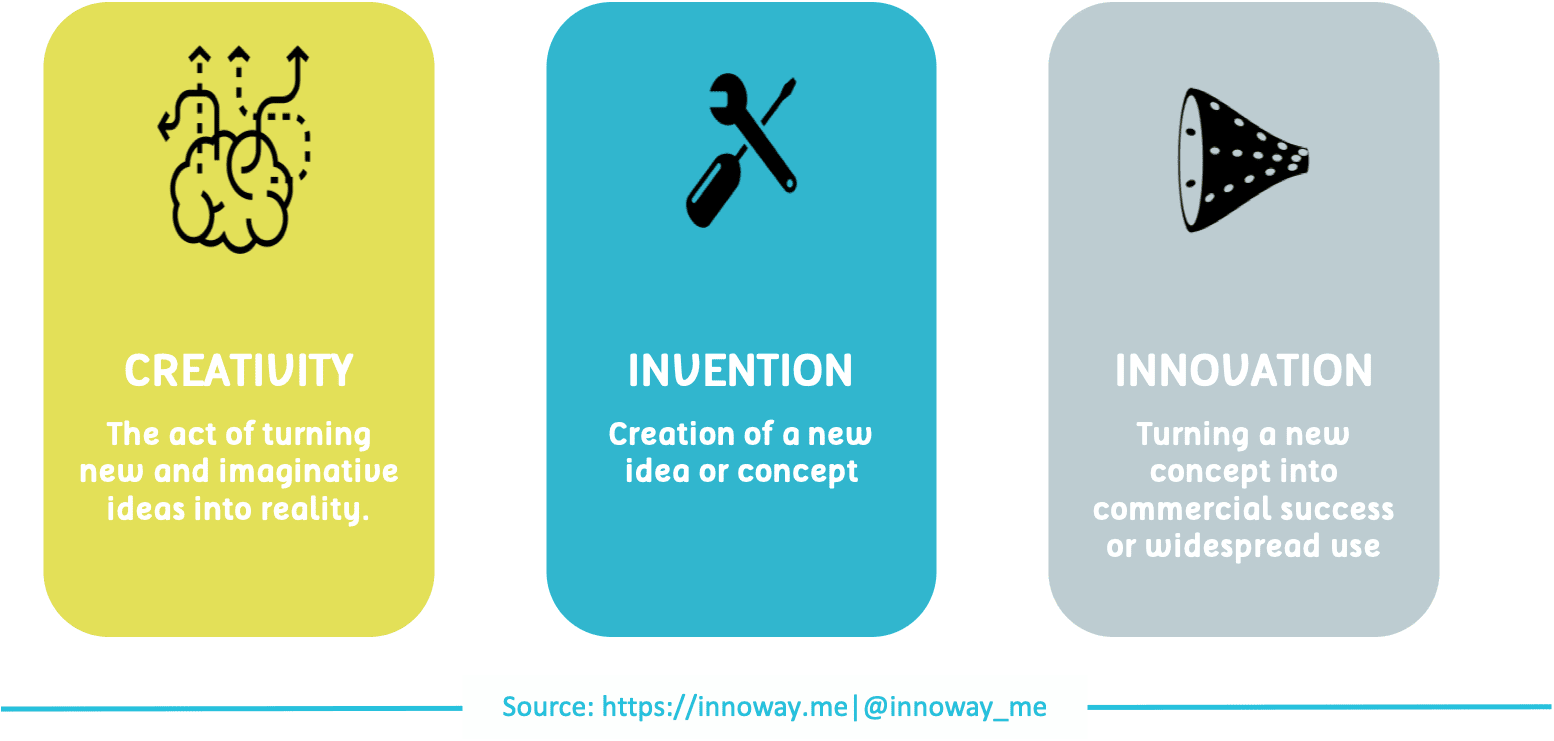
They do a great job of explaining the difference between creativity, invention and innovation.
Creativity is the art of turning new and imaginative ideas into reality.
Invention is the creation of a new idea or concept.
Innovation is turning a new concept into commercial success or widespread use.
Zaha Hadid’s amazing buildings are a testament to her creativity, but they are neither inventions, nor innovations.
Leonardo da Vinci, the famous painter was also a prolific inventor. Among his many designs was that of a helicopter which he called the Aerial Screw.

Leonardo da Vinci’s helicopter
If you look at da Vinci’s sketch dating back to the 1480s, you will notice a very strong resemblance with NASA’s Ingenuity Helicopter which took its first flight on Mars earlier this month.

Ingenuity helicopter, source: NASA
Taking inspiration from Leonardo’s concept, the engineers at NASA were prompted to solve a series of challenges related to Mars’ atmosphere. The Red Planet’s atmosphere is 99% less dense than Earth’s which makes it difficult for the helicopter to achieve enough lift.
The Aerial Screw is an invention while the Ingenuity is an innovation.
What is innovation?
Innovation sits at the intersection of customer desires, technology and business opportunities.
Innovation is defined as something new to the market that creates economic and customer value through research, creativity and invention.
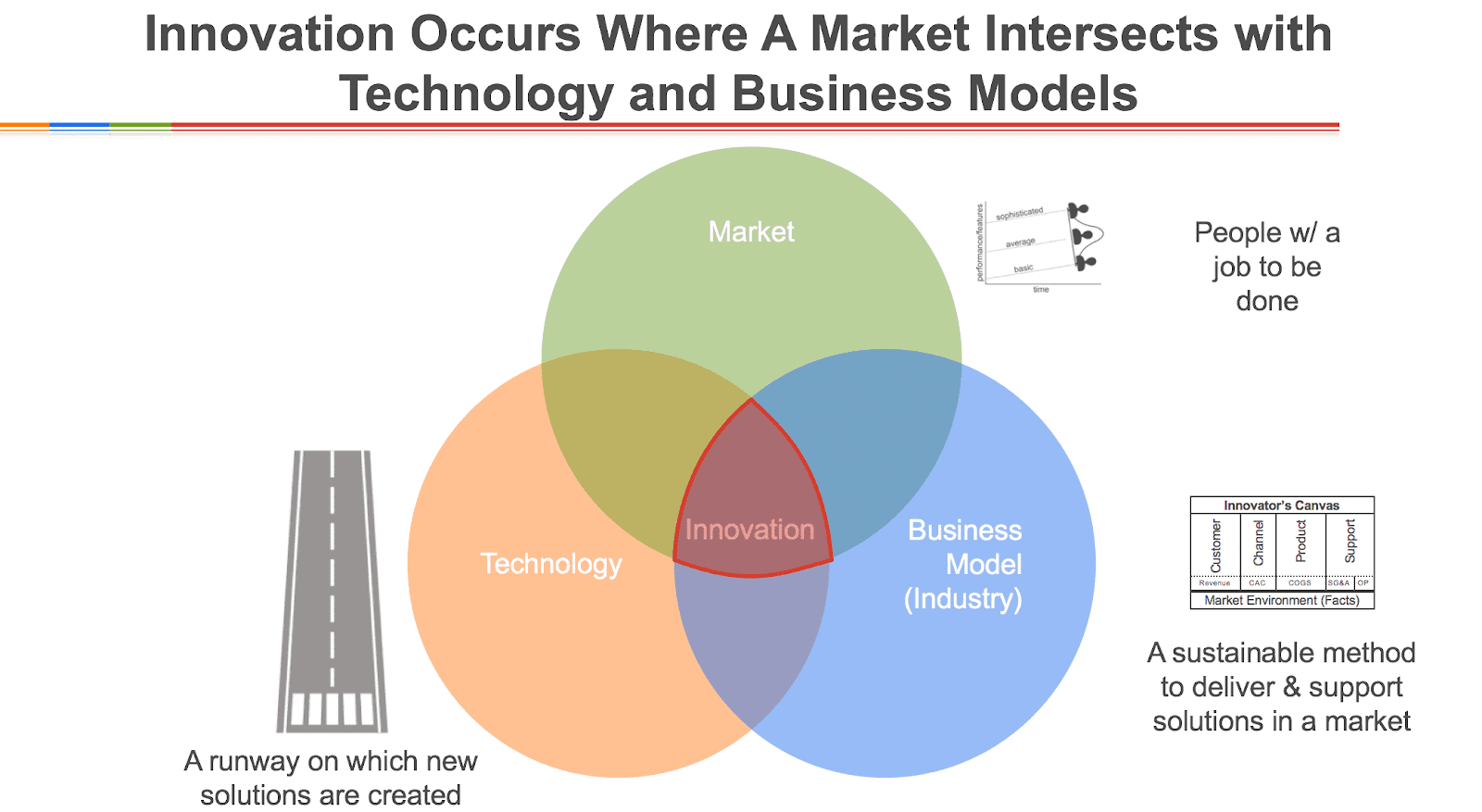
source: ignitionframework.com
Innovation occurs where a market intersects with technology and business models.
The market is composed of people with a job to be done. The business model is a sustainable method to deliver and support solutions in a market. Technology is a runway on which new solutions are created.
Innovators start with the market in mind and what the customers want or need.
Technology is not a goal, it’s a means to an end. Innovators ask themselves How can I use technology to address an unmet need in the market? What technology-driven solution can I come up with that provides customers with a solution to their problems and revenue for the company?
This is what innovators think about when they wake up in the morning and when they go to sleep at night.
The 4 types of innovation
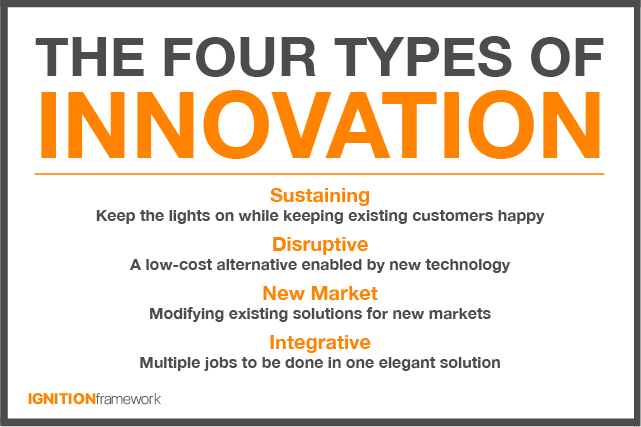
Jake Nielson, a marketing leader with 10+ years of innovation management experience came to the conclusion that there are 4 types of innovation:
- sustaining innovation;
- disruptive innovation;
- new market innovation;
- integrative innovation.
Sustaining innovation
Apple is an example of sustaining innovation. Since the first iPhone in 2007, the company has come up with new iterations of the iPhone every year. Every iteration had new features, improved functionality, beautiful design and innovations.
Disruptive innovation
Airbnb disrupted the hospitality industry. Uber disrupted the taxi industry. Netflix disrupted the DVD mail service. Amazon disrupted brick and mortar commerce. All four provide a better alternative enabled by new technology.
New market innovation
BMW has been manufacturing conventional cars since the early 1950s. Starting with the 1970s, the German car maker has been researching and testing electric cars. Today BMW electric cars are among the best in the market and the company is planning to offer plug-in hybrid versions of all its core-brand models.
Integrative innovation
MailChimp started out as an email provider for small businesses. The company’s email service was so successful that it became one of the most popular in the world. Listening to their customers’ needs, MailChimp expanded its services. MailChimp is now more than an email service provider, it’s an all-in-one marketing platform which empowers its users to build landing pages, create digital campaigns and leverage powerful insights. It supports small businesses to reach their marketing goals faster.
What type of innovation is your company developing?
Join the Conversation
We’d love to hear what you have to say.
Get in touch with us on our LinkedIn Page, Facebook Page, Twitter or TikTok.
Top 5 most in-demand soft skills you need to grow in 2021
Looking to develop your soft skills? Read on to discover the Top 5 most in-demand soft skills you need to grow in 2021.
Professional growth and career advancement hinge on the employee’s desire and ability to learn new things.
Whether you are looking to specialize in your field which means you’d want to go deep, or you are looking to diversify which implies going left and right (learn more about the T-shaped marketer), learning never stops. And it shouldn’t, rightfully so.
Over the past few years, LinkedIn, the 722-million member professional social platform, has been curating a list of the most in-demand soft and hard skills employers are looking for.
Here is LinkedIn’s list for the most in-demand soft and hard skills 2020.
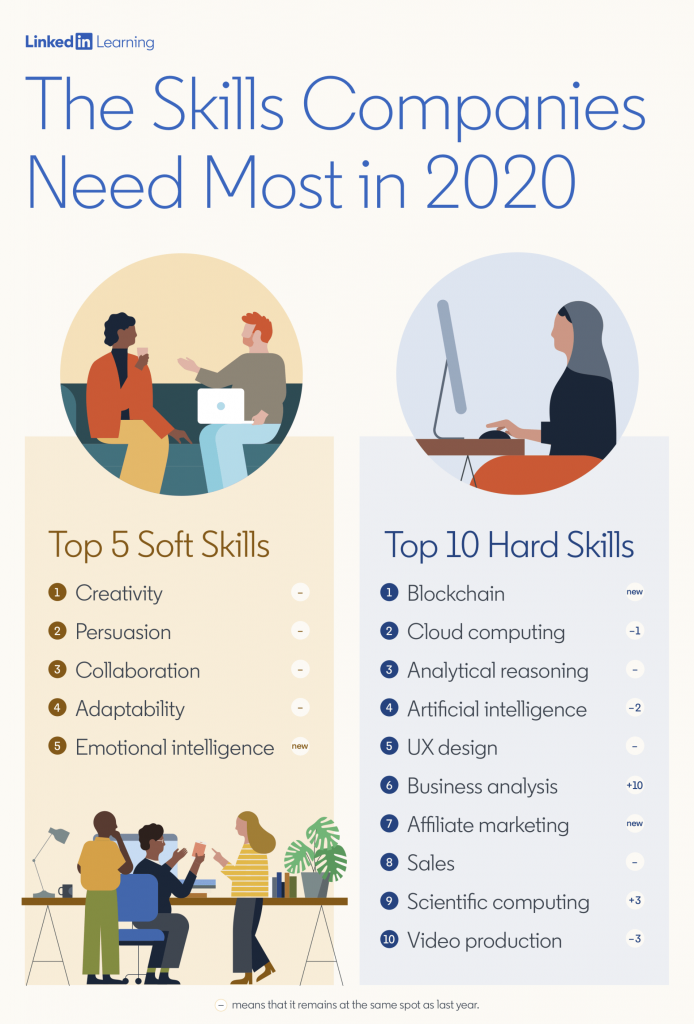
What are the Top 5 soft skills companies look for in their employees and new hires in 2020?
- Creativity
- Persuasion
- Collaboration
- Adaptability
- Emotional intelligence
Let’s talk about each of them.
1. CREATIVITY
Creativity is now the #1 soft skill companies are looking for three years in a row.
Why is creativity in such high-demand?
Listen to creativity expert and BRAND MINDS speaker Denise Jacobs:
Can creativity be taught or is it an inherent trait?
I believe one of the most creative organizations in the world today is NASA. Going into space requires finding solutions to unique problems and even unknown situations. That certainly pushes the brightest minds at NASA to come up with creative and out-of-the-box solutions.
In the 1960s, NASA reached out to Dr George Land, a creative performance researcher and enrolled his expertise in devising a creativity test to help with the selection for innovative engineers and scientists. Dr Land accepted the challenge and devised a creativity assessment that worked very well.
Inspired by the results and curious to know more about where creativity comes from, Dr Land conducted a research study to test the creativity of 1,600 children ranging in ages from 3 to 5 years old. He re-tested the same children at 10 years of age, and again at 15 years of age. And then he extended the testing pool to include 1 million adults.
What exactly did Dr Land test for?
He tested for the ability to look at a problem and come up with new, different and innovative ideas.
Here are the results:
5-year-olds: 98% imaginative
10-year-olds: 30% imaginative
15-year-olds: 12% imaginative
31-year-olds: 2% imaginative
That’s quite a shock, isn’t it?
We are the most creative in our childhood and we lose our creativity growing up.
What is the reason?
Dr Land gave the following explanation in his book, Breaking point and beyond:
What we have concluded is that non-creative behaviour is learned.
Is there something we can do about it?
In his 2016 Tedx Talk, Dr Land says there is a way to undo this process.
Let’s hear from Dr Land (08:37):
First of all, we need to think about creativity beyond artistic abilities.
Artists are not the only creative people.
Professionals in every industry have the ability to be creative. Because in the workplace, being creative means looking at a problem from a different viewpoint and coming up with a fresh solution, as Dr Land explained a few years ago.
It’s not about waiting to be inspired; it’s about thinking creatively.
According to Martin Lindstrom, brand expert and BRAND MINDS speaker, the first step towards creativity is taking time off from your smartphone, observing the people around you and essentially allowing yourself to be present.
2. PERSUASION
In business communication, persuasion is the process of presenting arguments to move, motivate, or change your audience.
Persuasion is one of the most important skills that a leader needs. He has the vision and he sets the goal; he needs to move and motivate his employees to fulfil the vision and meet the goal.
It’s the leader who tells his colleagues Come with me and let’s accomplish the mission together. This is the authoritative leader who provides employees with inspiration, motivation, empowerment and a sense of accomplishment.
Or the visionary leader whose motto is Embrace my vision. This type of leadership is called visionary leadership. The visionary leader must hone his persuasion skills to inspire and motivate people to pursue a long-term vision. Learn more about leadership styles: 12 Leadership Styles for Successful Leaders (complete list) with Pros & Cons.
Persuasion skills are necessary for sales and marketing as well. With a 30-year career researching the science of influence, Dr Robert Cialdini is the world’s most renowned persuasion expert and a BRAND MINDS speaker.
His Theory of Influence is based on seven key principles:
- Reciprocity,
- Commitment and consistency,
- Social proof,
- Authority,
- Liking,
- Scarcity,
- Unity.
Brands build on them to increase brand awareness and sales. Dr Cialdini’s latest insights on persuasion are in his 2016 book Pre-Suasion: A Revolutionary Way to Influence and Persuade.
3. COLLABORATION
We are living and working in a fast-paced environment.
Startups with a handful of employees that work as one are able to move quickly and more efficiently. Corporations with thousands of employees are slow and bureaucratic.
There are many examples of hundred-year-old brands outcompeted by new entrants on the market.
That’s where agility comes into play as a way of organizational transformation with one goal: adapt.
Want to learn more about agility? Read 22 benefits of the agile organization.
For an organization to become agile, its employees must form small teams. Every team member is expected to collaborate with each other. And that’s more difficult than you might think.
To meet the set goals, team members must learn to listen to each other, be supportive, be generous, learn to communicate clearly and openly, share knowledge and information, refrain from judgement, reject bias, debate and adapt.
The team leader must also be an example of effective communication and collaboration.
4. ADAPTABILITY
At the time of writing, the world has been fighting to end the COVID-19 pandemic for almost a year.
Our private and professional lives have been profoundly affected.
Many businesses are fighting to survive while others have already closed their doors. Adaptability has never been more important.
Why are companies looking for employees with a high ability to adapt?
Because these employees are a great asset to the company.
Highly-adaptable employees are:
- Willing to experiment;
- Undeterred by failure;
- Use the failure as an opportunity to learn;
- Resourceful;
- Keep an open mind;
- Have a growth mindset.
5. EMOTIONAL INTELLIGENCE
Emotional intelligence is a new entry in LinkedIn’s Top 5 most in-demand skills of 2020.
Why are companies looking for emotional intelligent employees?
Let’s first find out what is emotional intelligence.
Emotional intelligence is the ability to perceive, evaluate, and respond to your own emotions and the emotions of others. It’s the skill that facilitates and nurtures the other four.
Daniel Goleman, one of the world’s leading psychologists and BRAND MINDS speaker, introduced the concept of EQ or emotional intelligence in his 1995 bestseller, Emotional Intelligence.
According to Daniel Goleman, there are 5 key elements of emotional intelligence:
- Self-awareness;
- Self-regulation;
- Motivation;
- Empathy;
- Social skills.
Employees with high EQ collaborate better, are more adaptable, use persuasion for the right reasons, are motivated and able to motivate others.
The workplace benefits from increased engagement and the business are more likely to find creative ways to stay ahead of the competition.
Join the Conversation
We’d love to hear what you have to say.
Get in touch with us on our LinkedIn Page, Facebook Page, Twitter or TikTok.
4 brilliant marketing skills to achieve success in 2021
Looking to achieve success in 2021 as a marketer? Check these 4 brilliant marketing skills!
1. Automation skills
Automation is the elimination of all manual labour through the use of automatic controls that ensure accuracy and quality and was first coined in the 1940s at the Ford Motor Company. Automation ushered in the industrial revolution by producing goods at scale faster and better than the traditional man-powered system.
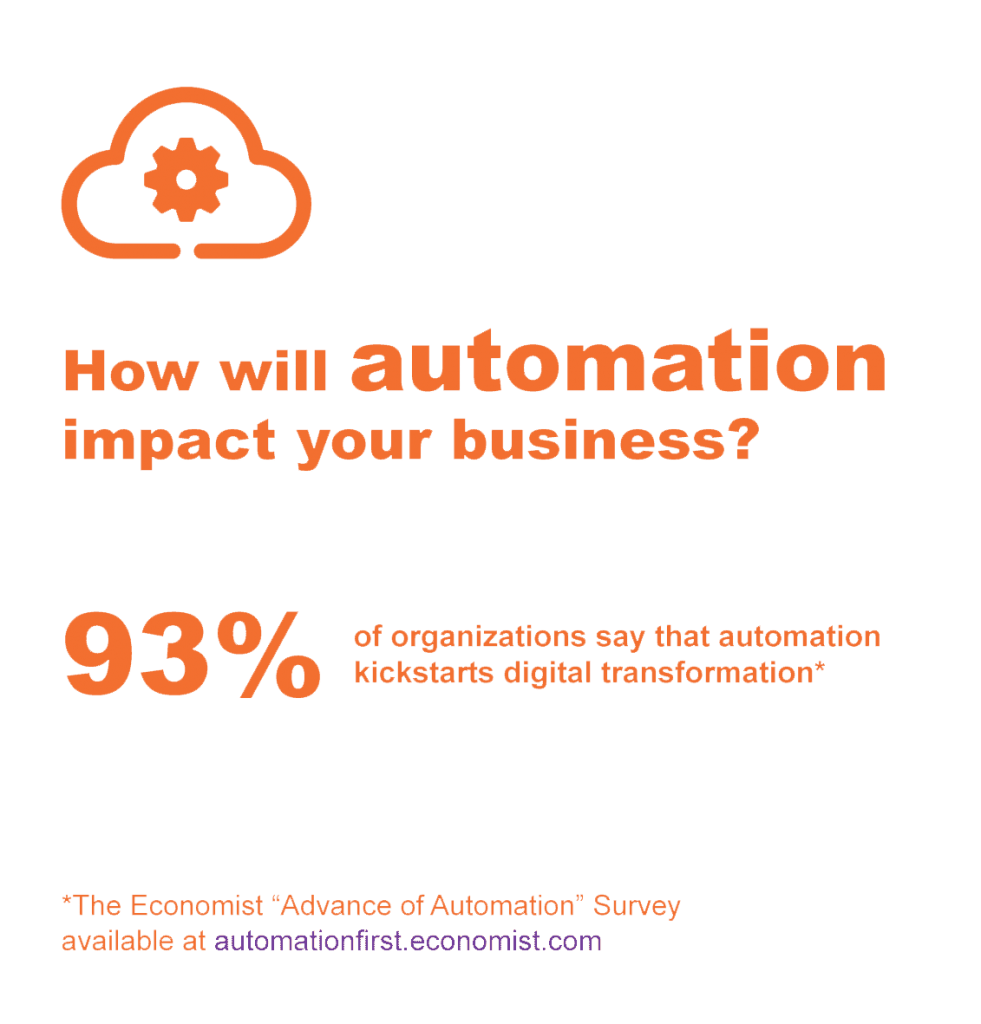
Business-wise, automation supports the organization’s efforts of streamlining its operations and processes thus freeing the employees from doing time-consuming tasks and allowing them to tackle creative tasks where they can add real value.
Learn more about business automation in 4 technologies every business should use to achieve its goals effectively in 2021.
In October 2020, leading Robotic Process Automation software (or RPA) UiPath’s survey on automation skills found that 70% of senior executives want non-technical employees to have automation and AI skills.
They also believe that employees with automation and AI skills will benefit from increased career advancement opportunities.
We are living in a digital world so it stands to reason that marketers should make the most of any digital tools that could help them achieve their goals.
What marketers are looking for is the next big idea that will increase market share, brand awareness and generate sales. Time is of the essence in any business, but in marketing, this is abundantly true. So automating time-consuming tasks whenever possible helps marketers become more efficiently and accurately.
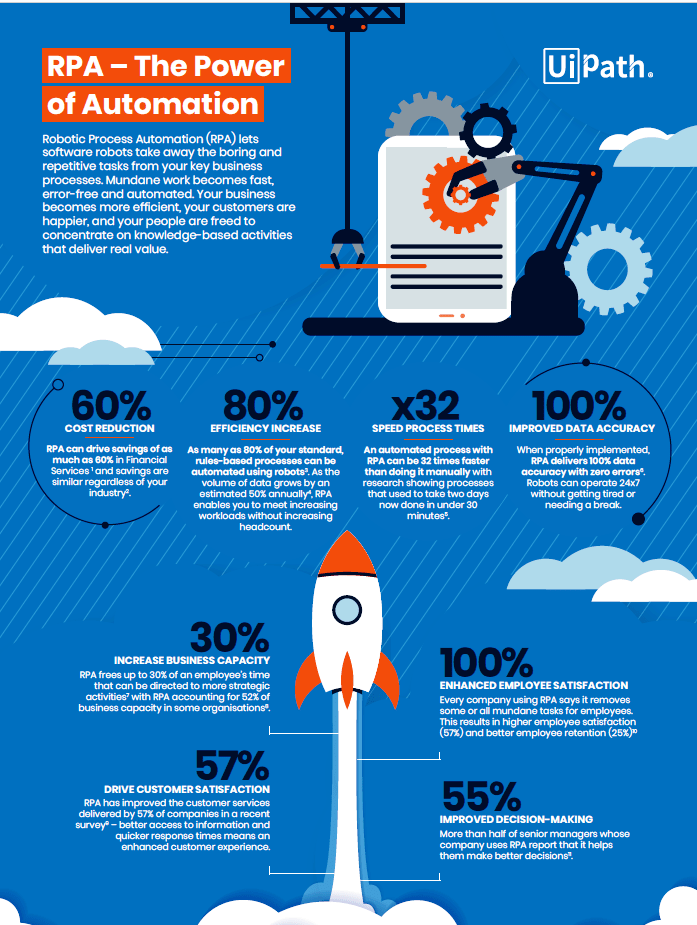
Infographic source: uipath.com
Here are some of the tasks you can assign to a software robot aka automate:
- Data integration with Excel automation for financial analysis;
- Data manipulation;
- Screen scraping;
- Create automation for single activities, desktop applications, multiple actions, web apps, and virtualized environments;
- PDF data extraction;
- Email automation.
Do you need any programming skills to automate tasks?
No.
RPA doesn’t require any programming skills to get started.
That’s great news but how come, you might ask?
The RPA software records tasks as they are being worked on by you and then replay these recorded tasks and voila!
Your mini-digital-you is doing them faster and better so you can focus on more important tasks.
To learn more about automation or begin upskilling, check out UiPath Academy’s free RPA training.
2. Trendwatching skills
BRAND MINDS 2020 speaker Gary Vaynerchuk started the Wine Library TV four months after YouTube launched in 2005. He was the first entrepreneur to build video content for a brick-and-mortar business.
Fifteen years later, Gary is now a digital expert and media icon with a combined 16-million followership. Having foreseen the video content trend taking off definitely helped him.
Watching the trends is a skill every marketer should start developing today. Not every brand can be a trendsetter, but every brand should watch the trends taking off or slowing down.
When marketers pair this kind of insight with creativity and a marketing goal, it’s a boost to the brand’s competitive advantage. And that could potentially be what separates one brand from its competition.
Here are 3 trend watching tools that you should explore:

Trendwatching is one of the world’s leading consumer trend firms since 2002. It is purpose-built to guide, inspire and empower business professionals. The company relies on its proprietary Purpose-Driven Innovation (PDI) methodology, a core analytical framework that turns trends into meaningful business opportunities.

Glimpse identifies growing trends by analyzing hundreds of millions of consumer behaviour signals from across the web, including products, companies and industries. Did you know that Chessable, a platform teaching players about different chess openings, endgames, and tactics has seen an increase in online popularity? It’s partly due to Netflix’s release of The Queen’s Gambit, which prompted the searches and online discussion of chess to double.
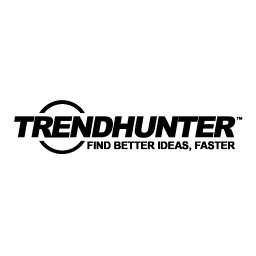
Trend Hunter boasts a monthly viewership of 20 million and identifies as a trend community. The company leverages big data, human researchers and AI to identify consumer insights and deep dive opportunities for the world’s most innovative companies. Among standard trends categories such as products, brands, topics or people, Trend Hunter also includes ideas as part of its offer.
3. Growth marketing skills
What is growth marketing?
Let’s look at three definitions of growth marketing I curated from different sources. Observe the bolded words.
The first definition says growth marketing is defined as the strategies, tactics and techniques used to focus on growing a business, product or service. Unlike regular marketing activities, the emphasis and activities focus on accelerating growth. (source)
The second definition says growth marketing is a process of rapid experimentation across marketing channels and product development to identify the most efficient ways to grow a business. (source)
The third definition of growth marketing goes as follows: Growth marketing is an approach to attracting, engaging, and retaining customers that’s focused on relentless experimentation and an intense focus on the unique, changing motives and preferences of your customers (source).
As you can see, there is no single accepted definition of growth marketing but some parts do overlap. The bolded words in each definition are my way of helping you see where that definition directs its focus.
So what’s growth marketing?
The first says it’s about strategies, techniques and tactics, which is an outward overview. The second talks about a process of rapid experimentation (speed) and includes product development which is an interesting approach. The third looks inward and makes the customers its focal point. It also includes experimentation, but this time it’s not about speed, but endurance over a long period. Think Sir Mo Farah, the marathon runner instead of Usain Bolt, the fastest man in the world.
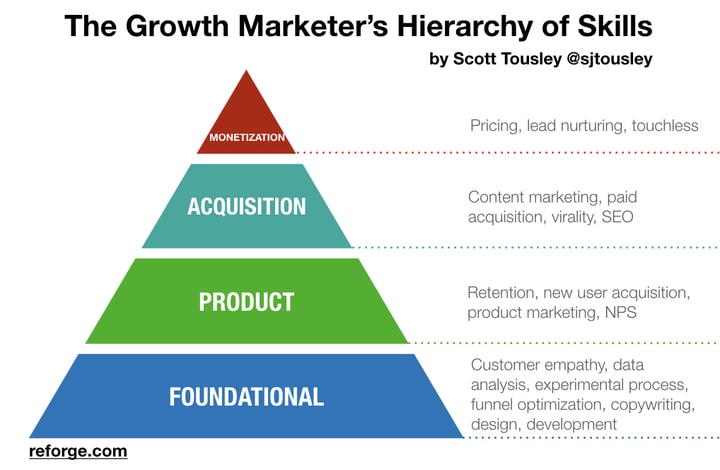
Seeing that growth marketing has so many definitions, what is the role of a growth marketer?
Also, don’t confuse growth marketer with growth hacker. According to Sean Ellis, the original growth hacker, a growth hacker is “the unique hybrid between a coder and a marketer”, thinking of growth first, budget second. He takes advantage of systems based on loops and goes deeper into the customer funnel.
Today’s fast-moving digital business environment requires marketers to turn into T-shaped marketers.
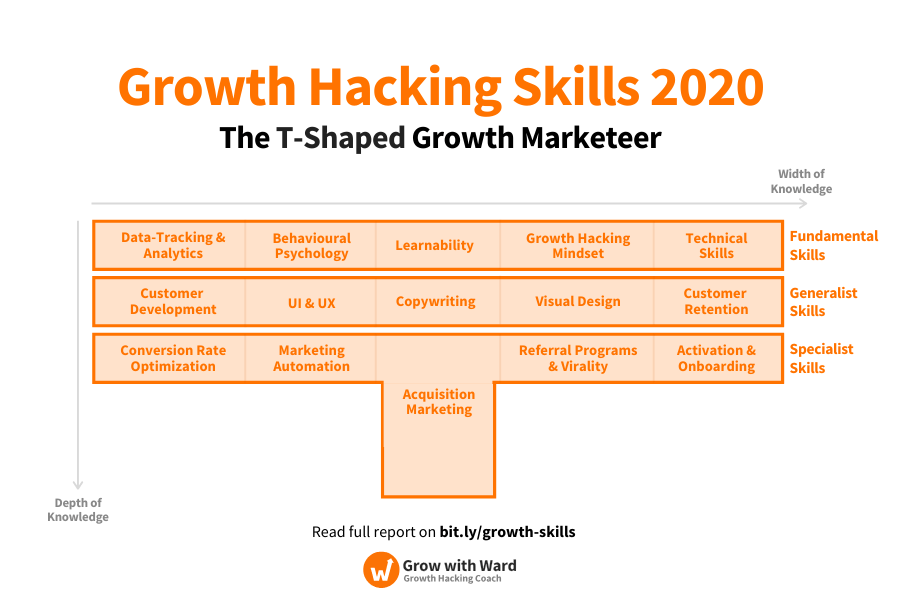
Fundamental growth marketing skills:
- Data-tracking & analytics
- Behaviour psychology
- Learnability (the desire and ability to grow quickly and adjust one’s skillset)
- Growth-hacking mindset
- Technical skills
Generalist skills:
- Customer development
- UX & UI development
- Copywriting
- Visual design
- Customer retention
Specialist skills:
- Conversion rate optimization
- Marketing automation
- Acquisition marketing
- Referral programs & virality
- Activation & onboarding
4. Stay informed
Successful marketers know what’s going on in the industry.
They follow the trends and the numbers, but, more importantly, they follow the people.
And I’m not talking about big celebrities, although every marketer should be aware of their power to influence communities and consequently their customers (there’s always a lesson to learn here).
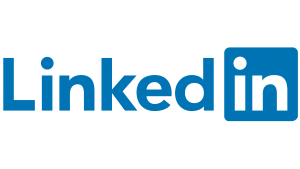
What I’m talking about is connecting with industry experts in various verticals on LinkedIn or other social media platforms.
From experienced sales professionals to UX designers, video content creators to business analysts, consumer behaviour specialists to performance marketers – they are valuable resources for any marketer looking to succeed today.
Follow them and you will always stay updated with the latest trends in marketing in particular and business in general.
Also, you will know what other brands do well or not so well. Why Quibi, the USD 2 billion-startup founded by one of the most powerful producers in Hollywood, led by an experienced CEO and slated for success, crashed and burned in just six months after its launch? There are definitely two lessons to be learned here: one is related to leadership, the second is related to marketing.
Use LinkedIn to achieve your professional goals. Connect with or follow industry experts or peers that share valuable insights. If you don’t know where to begin, check out LinkedIn’s Top Voices 2020 list.
Join the Conversation
We’d love to hear what you have to say.
Get in touch with us on our LinkedIn Page, Facebook Page, Twitter or TikTok.
The story behind the brand – LEGO
A study by the World Economic Forum estimates that given the pace of change 65% of kindergarten children will hold jobs that have not yet been invented. The only way we can prepare children is to give them skills that can be applied universally.
According to LinkedIn, creativity is the most in-demand soft skill for 2020.
LEGO inspires and develops the builders of tomorrow
How can children learn to be creative? Through play. Also, through play, children learn new things more easily and acquire soft skills that will support them in the future.
That’s what LEGO is all about: entertainment and education. Building with LEGO bricks helps kids develop their creativity, increase their problem-solving skills, become more resilient and boost their collaboration and communication skills.
As children shape their own worlds with LEGO bricks, we play our part in having a positive impact on the world they live in today and will inherit in the future.
LEGO
How LEGO started – a short history
Where does the name LEGO come from?
The name LEGO is an abbreviation of leg godt which means play well in Danish and I put together in Latin.
How old is LEGO?
In 1932, master carpenter Ole Kirk Kristiansen had a small workshop in Billund, Denmark. Business wasn’t great and before soon, he dismissed his last worker and closed the workshop.
But how was he going to provide for his four sons? Especially now when he lost his wife and his sons’ mother?
A resourceful man, Ole had an idea: he began making toys. After all, he had all the wood he needed from the carpentry production and lots of creativity.
The first LEGO toy Ole made was a wooden duck. This happened 88 years ago.

LEGO’s first wooden toy
“Only the best is good enough”, LEGO founder Ole Kirk Kristiansen’s motto
Ole’s wooden toy business gains momentum and word gets out that his toys are of the finest quality.
With the help of his son Godtfred, who starts working with him side by side, sales pick up and the future looks a little less grim.
Everything changes when Ole buys a plastic injection-moulding machine for toy production, the first machine of this type in Denmark.
In 1949, the LEGO factory starts making 200 different plastic and wooden toys, including Automatic Binding Bricks, a forerunner of the LEGO bricks we know today.

LEGO’s first brick
LEGO is much more than a brick, it is a system built around an idea
With sales picking up around Christmas and plummeting the rest of the year, Godfred felt their LEGO toys were missing something essential.
He realized they were giving kids ready-made toys which were not challenging enough. The toys needed an idea and a system built around it. This way children were able to use their imagination and creativity.
This is a breakthrough moment in LEGO history. Instead of offering kids ready-made toys, LEGO gives them the opportunity to build their toys – a much more challenging activity which kept kids engaged for hours.
The LEGO System of Play becomes very successful and the company starts selling it to other countries.

The bricks that stick together – the secret of LEGO’s success
The kids were happy building something with their own hands and very proud to show their constructions to their parents. But their joy wouldn’t last – the constructions were fragile, falling apart at the slightest touch like a card castle.
What if bricks could stick together? Godtfried asks himself.
He goes back to the drawing board and in 1958, he patents the iconic LEGO brick with tubes inside which makes bricks stick together.
From this moment on, LEGO becomes one of the largest toymakers in the world.

Today the LEGO brand value is estimated at $7.6 billion – LEGO by numbers
Over the past 88 years, LEGO has come a long way – from a small carpenter’s workshop in Denmark to a modern, global enterprise.
As of this year, LEGO ranks #1 in the Top 3 largest toy manufacturers in the world followed by Nintendo and Mattel, by sales and profits.
It was named “Toy of the Century” twice and is recognized by Reputation Institute as the most highly regarded company in the world when it comes to corporate reputation in 2020.
For 2019, the company’s revenue registers a 6% growth at $5.8bn and 69% return on invested capital. 25% of profit goes to the LEGO Foundation which brings learning through play to children in need.
1.8 million children across 26 countries play with LEGOs which parents can buy in 570 stores around the world.
Each year, the company’s portfolio grows by 60% with fresh new products, the latest of which blends augmented reality with building. LEGO management says “investing in fluid play – the intersection between digital and physical play – will continue to be a priority.” Aiming to add intelligence and behaviour to LEGO Play, the company initiates a visionary partnership with MIT Media Lab USA in 1984.
No matter how technologically advanced will the toys of the future be, LEGO’s main product is still the traditional LEGO brick. Just six two-by-four bricks can make 915 million different combinations. Kids are literally limited only by their imagination.
Adults also love LEGO
Building LEGOs is a way to strengthen family ties and for parents to spend time with their children.
It may come as a surprise to you, but adults love LEGO as much as kids. In fact, there’s a huge community of adult fans of LEGO or AFOLs as they call themselves. They usually gather together to discuss, host conventions and showcase their creativity.
Why do adults build LEGOs?
It’s the same as putting together a 5000 piece jigsaw – it’s a way to relax and pass the time. But compared to jigsaws, LEGOs develop the user’s creativity. When the construction is complete, adults don’t play with it, they take pictures and post them on social media for everyone to admire.
The AFOLs love LEGO and LEGO loves them back. They are a valuable group of customers and the company has found several ways in which to mobilize them: as brand ambassadors, as consumers of bigger purchases and as co-creators in the development of new products.
With 300 AFOL communities spread all over the world, LEGO has collected extended knowledge of their members.
Here are 4 statistics:
- AFOLs collect LEGO bricks from lots of different sets to make colourful MOCs (My Own Creation)
- Most AFOLs spend between 1-10 hours per week on building with LEGO bricks.
- For each real LEGO designer, there are around 600 hobby AFOL designers who develop new models or theme ideas.
- There are over 600 events for LEGO fans around the world each year, where AFOLs meet

An example of a MOC by an AFOL
Growing in value like vintage cars, LEGOs are a good investment
Just like cars, art or wine, LEGOs become more valuable over the years. Maybe not every set but some grow by as much as 700%.
Here’s one example: LEGO Grand Carrousel’s retail price in 2009 was 249 EUR and today, it is sold at EUR2000. That’s no small potatoes!

The Grand Carrousel (image source: brickowl.com)
Last year in December, LEGO took a significant step to deepen its relationship with their adult fans and acquired BrickLink, the world’s largest online community of adult fans. The digital platform boasts 1.1 million members and features a marketplace, software and a Forum where fans can celebrate and share their creativity.
Today, the company is still a family business run by Ole’s grandson, Thomas Kirk Kristiansen as Chairman of LEGO A/S since February 2020.
The toymaker has had its own share of business difficulties which the company has managed to overcome by focusing on its mission and corporate values and embracing the online and the eCommerce.
In 2009, the LEGO Group was the world’s fifth-largest toy manufacturer in terms of sales; eleven years later, it has taken the lead.
Sources: lego.com, brandfinance.com, researchgate.net. Photos: lego.com
Join the Conversation
We’d love to hear what you have to say.
Get in touch with us on our LinkedIn Group, Facebook Group or Twitter.
Facebook, Instagram, LinkedIn – Tips to help brands navigating COVID-19
On this page:
- Tips from Facebook: How to stay in touch with your customers and bring your business online;
- Tips from Instagram: The Instagram for Business COVID-19 Playbook
- Tips from LinkedIn: COVID-19-driven statistics, recommendations on how to stay connected to employees and customers and build trust through valuable communication
Facebook – How to stay in touch with your customers and bring your business online
Facebook has the following recommendations for businesses navigating COVID-19:
1.Keep yourself safe and informed
Follow the instructions issued by official sources such as WHO and the directions of your local health authority.
2. Stay in touch with your customers
Share important information on your Facebook page that is relevant to your business and your customers.
Tip1: You could reshare WHO’s content on your Facebook page or create original content to illustrate it. It’s a way to become a credible source and invite your followers to share your content with their friends because it’s relevant to the situation at hand.
Tip2: Post updates with important information regarding your business: how and what has changed, what steps does your business take to keep its employees and customers safe, what steps does your business take to #flattenthecurve etc. Pin these posts to your Facebook page.
Tip3: Update your Page Info or Page hours if necessary.
3. Bring your business online
If your business worked exclusively offline before the coronavirus pandemic, it’s highly recommended you look for ways to serve your customers online.
Tip1: Use the Shop feature of your Facebook page and list your products. Let your followers know they can now order them online.
Tip2: Add a Shop Now button to your Page
Tip3: Set up a digital gift card. It’s a way of allowing your followers to support your business. How to set up your gift card and check if this feature is available in your country.
Tip4: Download Facebook’s ready-made post templates to keep customers updated: place orders, shop online, get support, sell gift cards, express gratitude.
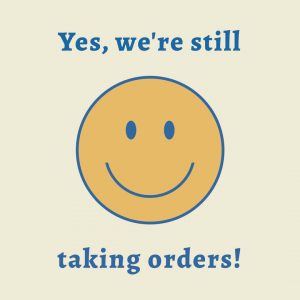
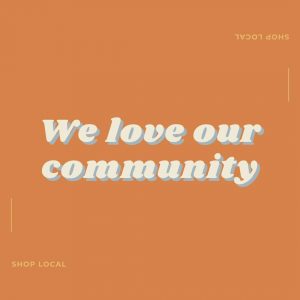



Tip5: Go Live. Here are a few ideas to inspire you: host a Q&A, interview an expert or one of your customers, do how-tos of your products, explain your services, teach your audience something valuable to help them overcome their challenges or reach their goals.
4. Prepare a customer service plan
Be responsive and transparent with your customers and prepare for incoming questions and requests.
Tip1: Turn Instant Replies on for messages on your Page and edit the message with information you expect your customers will be looking for.
Tip2: Set up a Messenger chatbot for your business. It’s easy, doesn’t require coding and it has many benefits. Your business chatbot reduces the workload for frontline staff, it is available 24/7 and lets customers access basic information quickly and easily. Learn how to build your chatbot.
5. Provide a list of FAQ
It’s likely many of your customers will ask the same questions so providing a list of FAQ shows you are a business which treats its customers’ concerns with respect. Not to mention it saves both your company’s and your customers’ time.
Tip1: Write the FAQ list and publish it in the Story section of your page. You can also make it into a post and pin it to the top of your page.
If your business is in one of the following industries: restaurants and cafes, retail, salon and spas, fitness and recreation centres, partners and agencies, media and publishers, explore Facebook’s guides tailored to each of them.
It’s also worth mentioning that Facebook has launched a grant programme for small businesses experiencing disruptions due to the global outbreak of COVID-19. The programme offers USD 100M in cash grants and ad credits to help your business keep its workforce, cover some of your rent costs, connect with more customers or cover operational costs. The programme is expected to support up to 30,000 small businesses that meet the following eligibility terms:
- They have between 2 and 50 employees
- Have been in business for over a year
- Have experienced challenges from COVID-19
- Be in or near a location where Facebook operates
Learn more about Facebook’s grant programme.
Instagram – The Instagram for Business COVID-19 Playbook
To support businesses facing difficulties and challenges adjusting to a new way of life and doing business, Instagram has created the Instagram COVID-19 Resource Directory.
The Directory includes the Instagram for Business COVID-19 Playbook which provides users with creative ways to keep their businesses alive and instructions on how to use the platform’s latest features allowing people to support their favourite businesses: digital gift cards, food order and fundraising options. Read about these three features.
The Instagram for Business COVID-19 Playbook provides businesses with recommendations and tips on how to bring their communities together, replace in-store shopping with online shopping, educate and entertain customers.
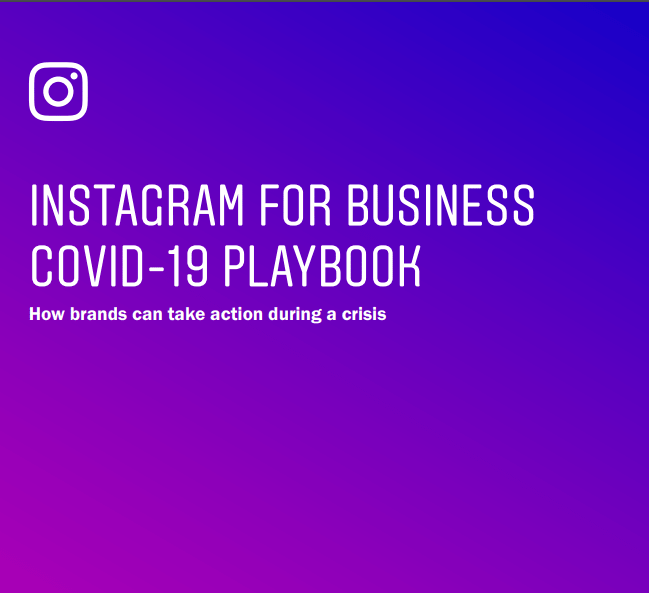
Bring your community together
Use the Instagram Live feature to bring your events online, host Q&A or find other ways to educate and entertain your followers. A Facebook Internal Data report released in March 2020 showed that Instagram and Facebook Live views doubled within a week in Italy.
Tips to make the most of your Instagram Live event:
- Tease it on Feed and Stories before you go live;
- Post your Live video to Stories when you’re done so it shows up for 24 hours;
- Save your Live video and upload it to IGTV.
Offer ways to shop online versus in-store
Here’s how to replace your in-store shopping with online shopping:
- Make sure your website URL is listed in your business bio on Instagram;
- Use Shopping Tags so that people can shop your products directly from Feed and Stories;
- Create visually engaging Stories around your products;
- Promote your products on Feed and Stories.
If you haven’t set up Instagram shopping for your business yet explore the guide here.
Educate and entertain your Instagram following
If you want to engage deeper with your audience, share long-form content to IGTV.
Tips on how to share your content on IGTV:
- First, create content around topics related to your business and relevant to your customers;
- Create serialized content to keep people engaged over a long period of time.
For more recommendations, tips and guides, check the Instagram for Business COVID-19 Playbook here.
LinkedIn – COVID-19-driven statistics, recommendations on how to stay connected to employees and customers and build trust through valuable communication
Since the beginning of the COVID-19 outbreak, LinkedIn has been following the activity within its platform closely and has released the following statistics:
- In January and February 2020, the top 3 hashtags have been #marketing, #leadership and #business; in March 2020, these three have been replaced with #coronavirus, #covid19 and #marketing;
- 33% of posts are now related to coronavirus;
- Searches for #remote working have gone up 3x in recent weeks;
- The number of articles shared on the platform has grown by 2196% and the engagement rate by 2781%;
- COVID-related posts published by pages have increased by 36%;
- Members and companies are discussing remote working (19%), crisis management (12%) and social distancing (8%).
Your business can use these statistics as a starting point for creating valuable content to be published on its LinkedIn company page.
Here are 8 recommendations from LinkedIn that your brand should consider before diving into creating content:
- Never lose sight of your customers’ and employees’ needs.
- Demonstrate trustworthiness.
- Bring your brand values to life.
- Be supportive.
- Be human.
- Listen intently.
- Be mindful of tone, timing, and delivery.
- Look forward while keeping your finger on the pulse.
To support businesses and workforces worldwide during this difficult time, LinkedIn has created a coronavirus resource hub where the platform provides users with recommendations and tips on how to stay connected to employees and customers and keep their teams productive.
Stay connected to employees and customers
To help businesses stay connected to employees and customers, LinkedIn brings together insights and content ideas in this PDF.
The professional platform also recommends businesses to host virtual events with LinkedIn Live and LinkedIn Events.
Webinars are also a great alternative to in-person meetings and an essential tool for any business to talk to customers. If you are interested in hosting webinars, LinkedIn’s playbook on webinar best practices provides you with helpful tips and best practices examples.
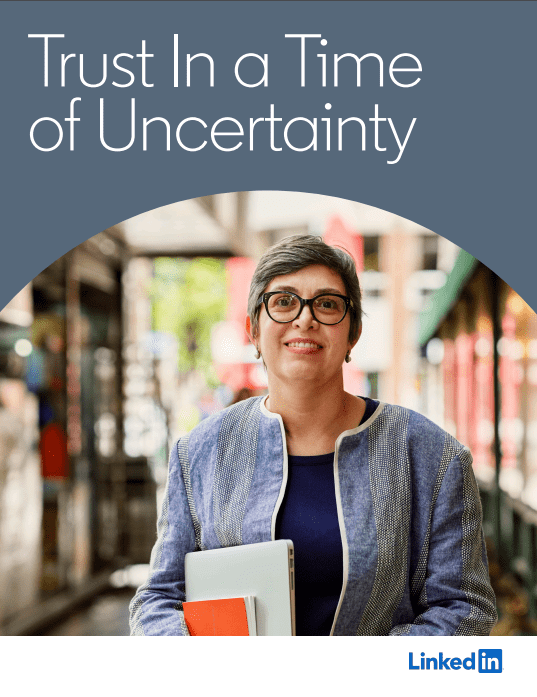
In a time of uncertainty, it’s imperative that leaders build trust through valuable communication involving their employees, their customers and their shareholders. Leaders must communicate in a clear and consistent voice. In collaboration with Edelman, the global communications firm, LinkedIn has released an executive guide for business leaders who are looking to become valued communicators. Explore the guide here.
Join the Conversation
We’d love to hear what you have to say.
Get in touch with us on our LinkedIn Group, Facebook Group or Twitter.
15 LinkedIn Statistics Every Marketer Needs To Know
If you haven’t yet included LinkedIn in your marketing mix, then now is the time.
Here are 15 updated statistics on LinkedIn that you need to know:
1. 610 million members in 200 countries and territories;
2. LinkedIn audience analysis: 46 million B2B decision makers, 10 million C-level executives, 6 million IT decision makers, 17 million opinion leaders, 40 million mass affluent;
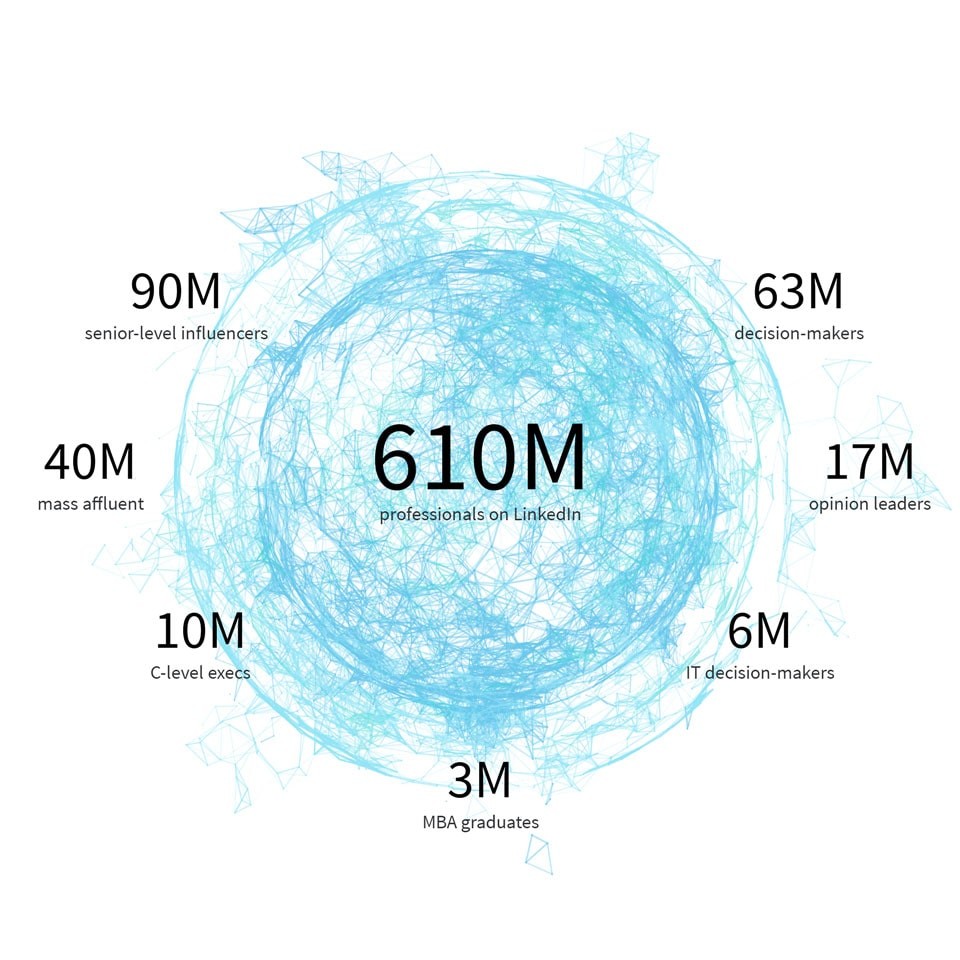
source: LinkedIn
3. 30% growth year-over-year in the number of sessions on LinkedIn;
4. 2 professionals join LinkedIn every second;
5. 45% of LinkedIn users are in upper management (CEOs, directors, vice-presidents etc);
6. 9 billion content impressions;
7. 94% of B2B marketers use LinkedIn to distribute content;
8. LinkedIn is the #1 social network for lead generation;
9. 57% of users access LinkedIn on mobile;
10. 2 million posts, articles and videos are published on LinkedIn every day;
11. 80% of leads come from LinkedIn;
12. Elevate, LinkedIn’s employee advocacy program can drive a 24x increase in social media engagement;
13. LinkedIn is the most successful platform for content marketing purposes;
14. There are 30 million company pages;
15. LinkedIn is the most trusted social platform.
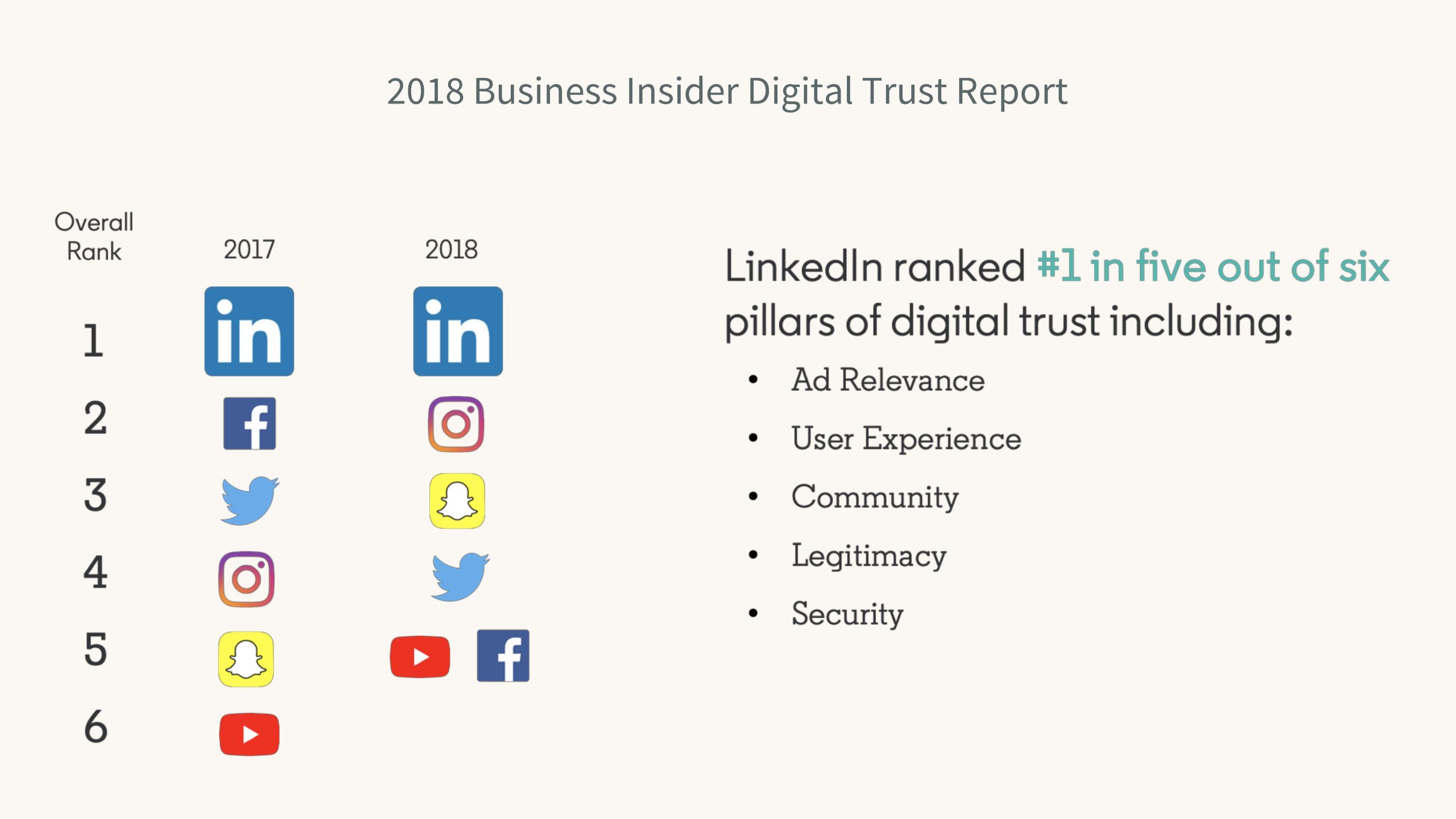
source: LinkedIn
Conclusion
LinkedIn is the perfect social media platform for B2B companies, salespersons, professionals looking to grow their personal brand, thought leaders and world-changers.
If you are planning to include LinkedIn in your marketing mix, here is another resource for your inspiration: how to use LinkedIn’s native video tool to raise brand awareness and attract leads.
Join the Conversation
We’d love to hear what you have to say.
Get in touch with us on Facebook Group and Twitter.
LinkedIn Report: 4 Trends Transforming The Workplace in 2019
LinkedIn, the 600 million users social network has released its 2019 Global Talent Trends Report. The report highlights four trends transforming the workplace in 2019.
The researchers have surveyed over 5000 talent professionals in 35 countries interviewing company leaders, speaking with experts, and observing activity on the LinkedIn platform.
Here are 4 trends which are set to transform and shape the workplace in 2019:
- Soft skills;
- Work flexibility;
- Anti-harassment;
- Pay transparency.
1. Soft Skills
A.I. may be able to write news articles and making movie trailers, but they cannot display soft skills.
Creativity, persuasion, collaboration, adaptability and time management are valuable soft skills employers actively look for when searching for new hires.
80% of surveyed employers say soft skills are increasingly important to company success. The challenge that companies are struggling to overcome is the process by which to identify the aforementioned soft-skills. According to this report, 57% of employers struggle to assess soft skills accurately.
LinkedIn: 6 tips to help your company assess your candidates’ soft skills
1.Determine the soft skills valued most at your company by taking the following steps:
- interview your company’s leaders;
- identify the skills shared by your top performers;
- consider the skills your company needs to take on future challenges.
2. Identify and define the skills needed for a given job.
3. Consider online tools to prescreen candidates – these tools assess their soft skills systematically and with less bias (ideally).
4. Be mindful that bias can creep in.
5. Standardize your interview questions.
6. Ask problem-solving questions to see soft skills in action.
A case study on hiring for soft skills and hard skills
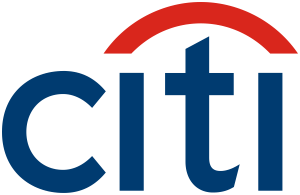
Citi, the Wall Street firm is not hiring for technical skills alone.
The company uses problem-solving case studies and group exercises to showcase candidates’ collaboration, communication, and leadership skills.

2. Work Flexibility
Between 2013 and 2017 candidates’ request for flexible workplaces has increased from 25% to 31%.
Since 2016 the number of job posts on LinkedIn which mention flexibility rose to over 78%.
The ability to work from any place outside the office has been driven by technology and required by an increasing number of employees who are looking to improve their work-balance life and be more involved with their family.
Here are the top benefits of work flexibility as mentioned by talent professionals:
- Improves employee work-life balance – 77%;
- Encourages retention – 54%;
- Attracts candidates – 51%;
- Increases productivity – 42%;
- Expands available talent pool – 38%.
Women candidates are more inclined to look for flexibility when considering a job offer.
The LinkedIn report found that 36% of women and 29% of men say flexible work arrangements are very important when considering a job.
PwC has identified five megatrends which will influence the world and shape the business environment of 2019.
One of these trends is the demographic and social change that is driven by the ageing population which is the fastest growing segment today. The ageing population brings disruption to the traditional life cycle of education, work and employment and increased costs on healthcare.
The solution to this situation lies in the business environment.
To succeed and thrive, businesses need to harness the power of older workers and women. Businesses catering to women’s needs will see increased productivity and reduced turnover.
Discover 4 flexible work strategies in our article:
Employees Stress – Causes, Business Costs and What To Do To Prevent It
A flexible workplace is also known to bring difficulties in collaboration and bonding. Have no fear, technology comes to the rescue! There are many tech solutions to overcome remote work challenges like instant messaging platforms, collaboration tools, audio and video conferencing etc.
LinkedIn: 6 steps to building a flexible work culture
- Know what types of flexibility your employees want;
- Optimize your office space for a semi-remote workforce;
- Help employees connect through technology;
- Promote your flexibility policy in job descriptions, candidate interviews, and employee meetings;
- Train leaders to manage flexible workers;
- Tailor your flexibility policies to fit local cultural contexts, needs, and goals.
A case study in work flexibility
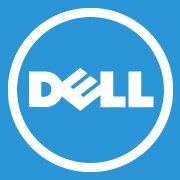
Nearly 60% of Dell employees work flexibly. Dell’s flexible program has saved the tech giant an average of $12 million annually since 2014 due to reduced office space requirements.

3. Anti-Harassment
The #metoo movement spread like wildfire across the globe in 2017. The first spark was ignited by the high-profile harassment cases in the US entertainment industry. Over a short period of time, harassment cases voiced by women encompassed the business environment across multiple industries.
One may believe that companies didn’t have anti-harassment policies before the #metoo movement. They had only they didn’t prevent unacceptable behaviours from happening; the company culture was such that harassment and assault cases went unreported to management. Harassment victims didn’t believe they would be heard or that management would take any actions towards their assailants.
LinkedIn found that workplace harassment content shared on its platform increased by 71% year on year.
Employers are seeing anti-harassment as a business necessity, not just a legal and moral one. Hostile workplaces hurt the bottom line through lost productivity and turnover, while respectful ones attract talent and improve engagement.LinkedIn, The 2019 Global Talent Trends Report
75% of the talent professionals surveyed by LinkedIn said they had noticed the following behavioural changes among employees over the last two years:
- Speaking up more when uncomfortable;
- Discussing social issues more openly;
- Calling out bad behaviour more;
- Telling fewer insensitive jokes;
- Willing to listen more.
Here are the most effective anti-harassment tactics as mentioned by the surveyed professionals:
- Promote ways to safely report;
- Establish a zero-tolerance policy;
- Add more ways to safely report;
- Hold training sessions;
- Increase gender diversity of leadership;
- Add or improve policies.
LinkedIn: 4 steps to help combat harassment
- First, understand where you are before you can see what needs to change: review your existing policy, understand what your employees want, rethink well-intentioned practices that can backfire, get buy-in from the top.
- Give your policy a refresh: tell people exactly how you handle harassment claims, give employees multiple ways to report, define good behaviour, too, adapt your policy to local needs;
- Train and communicate: focus on the grey areas, make it interactive and personal, be inclusive of all victims, complement customized training with external resources, empower employees to step in when they witness an offence, not just when they’re a target.
- Respond and follow up: help victims feel safe from the start, tailor the response to the severity of the offence, respond to inappropriate behaviour publicly and with real consequences, reach out to victims even after your legal obligation is fulfilled.
A case study on anti-harassment
Last year 20.000 Google employees left their offices in New York City, Dublin, Berlin, Singapore and other cities around the world to protest against the company’s handling of sexual misconduct and inequality. Google walkouts forced the big company to review its harassment and transparency policies.
In an email sent to employees, Google CEO Sundar Pichai acknowledged previous shortcomings and laid out a plan to make changes:
We recognize that we have not always gotten everything right in the past and we are sincerely sorry for that. It’s clear we need to make some changes.
Going forward, we will provide more transparency on how we handle concerns. We’ll give better support and care to the people who raise them. And we will double down on our commitment to be a representative, equitable, and respectful workplace.Sundar Pichai
4. Pay Transparency
For years, employers refrained from disclosing too much information about employee salaries. They feared a transparent process would cause wage disputes, limit their ability to negotiate, and encourage competitors to poach talent. Salaries were kept a secret under the thick blanket of confidentiality.
The problem is when people don’t have enough information, they tend to fill in the blanks with negative assumptions.
A 2017 report conducted by PayScale showed that 61% of surveyed employees believed they were underpaid compared to other colleagues.
If employers are looking to attract the best and the brightest, they should include pay transparency in their hiring strategies.
Searching for conversations focused on pay transparency, LinkedIn found that the content shared by its users on this particular topic has increased by 136% since 2014.
But not all employers are ready to shift gears so quickly. As reported by talent professionals, 27% of companies share salary ranges, 22% don’t share but are likely to start and 51% don’t share and are unlikely to start.
Benefits of sharing salary ranges as highlighted by LinkedIn in its report:
- Streamlines negotiation;
- Ensures fair pay;
- Filters out those who’d decline;
- Allows interview to focus on other things.
LinkedIn: 7 steps to establish pay transparency
- Conduct an internal audit to see how your pay compares to competitors and whether you have any major pay gaps across gender, race, and those in similar roles;
- Decide how transparent you want to be;
- Solicit employee input;
- Develop clear compensation criteria;
- Train managers to discuss pay appropriately;
- Take it one step at a time;
- Communicate clearly as you roll out the policy.
A case study on pay transparency

Buffer began sharing salaries publicly online in 2013. The company uses a salary formula which meets the transparency criteria for each of its employees. The formula determines every employee’s pay based on their experience, local cost-of-living, and the market rate of the role. Buffer employees are happy with the company’s pay transparency strategy because it ensures they receive equal pay for equal work. They also feel valued and respected when they know they are being paid fairly.
Join the Conversation
We’d love to hear what you have to say.
Get in touch with us on Facebook Group and Twitter.
Video – 10 Smart Ideas to Grow your Professional Brand on LinkedIn
Native video is the latest tool which personal accounts can use to grow their professional brand on LinkedIn. The business social media platform introduced native video a little over a year ago.
Why LinkedIn?
LinkedIn has come a long way from being a collection of CVs to the best social media platform for generating leads. As of late, LinkedIn is also on the way of becoming a content-driven platform.
If you are an entrepreneur, business development manager or marketer, LinkedIn is the place to be.
But don’t take our word for it!
Here are the most relevant statistics from LinkedIn itself:
- 80% of B2B leads come from LinkedIn vs. 13% on Twitter & 7% on Facebook;
- 94% of B2B marketers use LinkedIn to distribute content;
- There are 9 billion content impressions in LinkedIn feeds every week;
- 46% percent of social media traffic coming to B2B company sites is from LinkedIn;
- There are 40 mil decision-makers;
- 65% of B2B companies have acquired a customer through LinkedIn.
Why you should use video on LinkedIn
People buy from people they know, like, value and trust. So getting yourself out there is the best way to let people know you, connect with you on a personal level and build trust – in one word – grow your professional brand.
Important note:
Keep in mind that all video content (or any content!) should be about bringing value to your connections.
Talk is cheap so let’s get right to it!
10 smart ideas for video content you can use on LinkedIn to grow your professional brand
-
Tell your story
-
Insider look/Behind-the-scenes
-
Ask/Answer questions
-
Give feedback/Insights
-
Share the project you’re working on
-
Show your work
-
Ask/Give advice
-
Share tips & tricks
-
Customer reviews
Bonus
We reached the end of our list of 10 ideas but we were so inspired in writing this article that we decided to give you one more idea for your video content on LinkedIn!
Here it is:
-
Inspirational/Motivational
No one inspires like GaryVee!
By the way, we are thrilled that Gary Vaynerchuk was one of our star speakers at Brand Minds 2017!
Do you want to learn how to promote your brand on LinkedIn?
Don’t miss Digitalium, the Hottest Digital Marketing Conference where you can listen to A. J. Wilcox talk about mastering LinkedIn business strategies!
Global Recruiting Trends 2018 – LinkedIn Study
LinkedIn is the main social platform for recruiting purposes.
Latest statistics show there are more than 562 million users on LinkedIn in over 200 countries, more than 15 million jobs are listed on LinkedIn Jobs and professionals are signing up to join LinkedIn at a rate of more than two new members per second.
The collected data and info allowed LinkedIn to research global recruiting trends for 2018.
Find out the 2018 global recruiting trends, discover how various companies apply them to their hiring processes and see the results these new tools have brought them.
[bctt tweet=”Global Recruiting Trends 2018 – LinkedIn Study @LinkedIn” username=”brand_minds”]
Global Recruiting Trends 2018 – LinkedIn Study
In the latest years, the hiring process has become highly inefficient. Tedious candidate searches, endless scheduling and repetitive screening have made it hard for recruiting professionals to find and attract valuable candidates. But there is hope on the horizon for both companies and candidates!
The LinkedIn study revealed 4 recruiting trends:
- Diversity;
- New interviewing tools;
- Data;
- Artificial Intelligence.
Companies interviewed by LinkedIn have found these tools to directly impact their recruitment process.
If you wish to increase the quality of your candidates and to improve your hiring process, keep reading!
1. DIVERSITY
Diversity used to be a box that companies checked. But today, diversity is directly tied to company culture and financial performance. LinkedIn data shows that 78% of companies prioritize diversity to improve culture and 62% do so to boost financial performance.
Companies that didn’t adapt to changing demographics have realised their talent pools were shrinking. Evidence has showed the benefits of diverse teams: increased levels of productivity, innovation and engagement.
Top reasons companies focus on diversity:
- 78% to improve culture
- 62% to improve company performance
- 49% to better represent customers.
Many companies fall short on achieving their diversity goals because they are not looking in the right places.
Diversity Challenges
Here are the biggest challenges that companies face when looking to improve diversity within the company:
- 38% cannot find diverse candidates to interview;
- 27% fail to retain diverse employees;
- 14% fail to get diverse candidates past interview stage;
- 8% fail to get diverse candidates to accept offer.
How do companies show candidates that they value diversity?
- 52% use diverse employees in web and print materials;
- 30% talk about ERGs;
- 35% present diverse interview panels;
- 28% recruit at schools with diverse student bodies.
Dos and donts:
- Do use inclusive language in your job descriptions
Inclusive language will broaden the appeal of your opportunities and let you reach more diverse talent.
- Do empower employees to tell their stories
The storytelling exercise itself will boost engagement with employees while growing your reach with diverse candidates in an authentic way.
- Do promote inclusion and advocate change with ERGs
You have much more diversity power when you can lean on the natural momentum of grassroots groups.
- Don’t have a diversity “strategy.”
Think of it as a mindset instead. Start small to effect change. Weave it into everything your company does, little by little.
- Don’t invest without buy-in from the top
You won’t go far if your leaders aren’t sold on the value of diversity. The bottom line will always grab their attention so make your case with numbers.
- Don’t perpetuate the appeal of “culture fit”
Change the bar with which you assess talent from “culture fit” to “culture add” to better create a culture of differences.
2. NEW INTERVIEWING TOOLS
Interviewing is the most widely used tool by recruiters. That being the case, traditional interviews have many flaws and hiring experts have detailed where they fall short.
Interviewing Challenges
- Assessing candidate soft skills – 63%;
- Understanding candidate weaknesses – 57%;
- Bias of interviewers – 42%;
- Too long of a process – 36%;
- Not knowing best questions to ask – 18%.
To get different results, recruiters have changed the way they conducted the interviews.
Interviewing Innovations
Here is how recruiters improved their interviewing strategies:
- 59% used soft skills assessments;
- 54% conducted job auditions;
- 53% met with candidates in casual settings;
- 28% conducted virtual reality assessments;
- 18% interviewed candidates through video.
“Take a look inside their heart, rather than their head.”
Walt Bettinger
CEO of Charles Schwab
Companies using new interviewing tools:
- Citi piloted the Koru7TM, a 20-minute survey that ranks candidates’ soft skills strengths and weaknesses which allows Citi to conduct more informed interviews;
- Jet.com interviewed candidates on ferris wheels;
- Daimler AG took candidates for a spin in a Mercedes;
- Lloyds Banking Group evaluated candidates in virtual reality as part of a day-long assessment center visit;
- KPMG used video interviews to evaluate candidates’ skills at scale, before even meeting them.
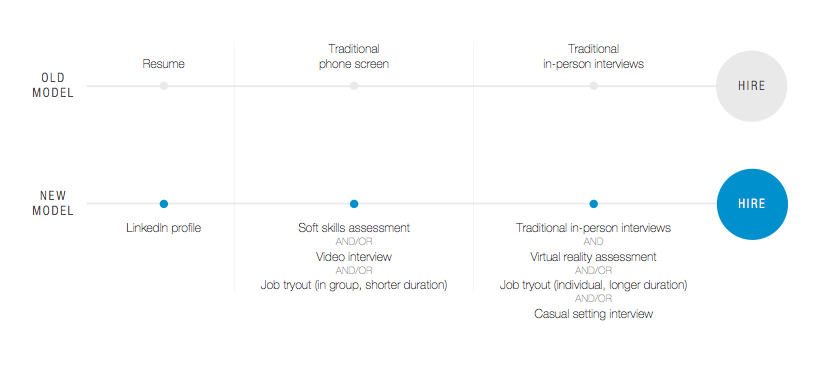 LinkedIn Global Recruiting Trends 2018
LinkedIn Global Recruiting Trends 2018
“We were hiring based on experience and not potential, and the profile of our leaders yesterday will not be the same profile for our future leaders. Our process was not fit for purpose in the connected world.”
Melissa Gee Kee
Strategy Director to the CHRO, UNILEVER
Benefits and results of new interviewing tools:
- Better assessment of soft skills;
- More talent pool diversity;
- Positive candidate experience;
- Better ability to see character;
- Candidates can try out job for fit – 59%;
- Less bias than traditional formats – 47%;
- Video has cut the number of in-person interviews from thousands to hundreds, freeing up significant recruiter time;
- The hiring process changed from experience based to potential based;
- More realistic snapshot of candidate’s personality – 69%;
- Candidates can’t lie about skills – 26%.
3. DATA
Most recruiters and hiring managers use data in their work now and even more are likely to use it in the next two years.
Data can be used to predict hiring outcomes, not just track them. Data can power machines to make smarter recruiting decisions for recruiting experts.
How companies use data in talent acquisition:
- 56% to increase retention;
- 50% to evaluate skills gaps;
- 50% to build better offers;
- 46% to understand candidate wants;
- 41% to do workforce planning;
- 39% to predict candidate success;
- 38% to assess talent supply and demand;
- 31% to compare talent metrics to competitors’;
- 29% to forecast hiring demands.
Data-based recruiting challenges
What prevents hiring managers to use data?
- 42% say the quality of collected data is poor
- 20% are not sure where to get it
- 18% say data is too expensive
- 14% are not sure how to use it.
Companies using data-based recruitment:
- Nielsen used data to find out what was the reason for losing talent and how to prevent it: thanks to collected and analysed data, they found that employees with a change in job responsibilities due to promotion or lateral movement within the past two years were much less likely to leave;
- Novartis leveraged data from LinkedIn to decide where to open its new office;
- With the help of its customer feedback data, JetBlue tweaked its target profile;
- Atlassian used internal data and LinkedIn’s talent pool reports to pinpoint key European markets where the supply of tech talent exceeded the demand.
“Data is the one language that everybody speaks across the company. I gain trust from people across functions by bringing something that can be verified, something that can be checked.”
Bret Larson
Director, Talent Management & Analytics, EMERSON
Benefits and results of data-based recruiting:
- Increased employee retention thanks to more opportunities being offered to them;
- Faster decision making;
- Access to passive talent;
- Stronger employee engagement;
- Higher customer satisfaction;
- More international hires;
- Stronger employer brand;
- More credibility for talent acquisition professionals.
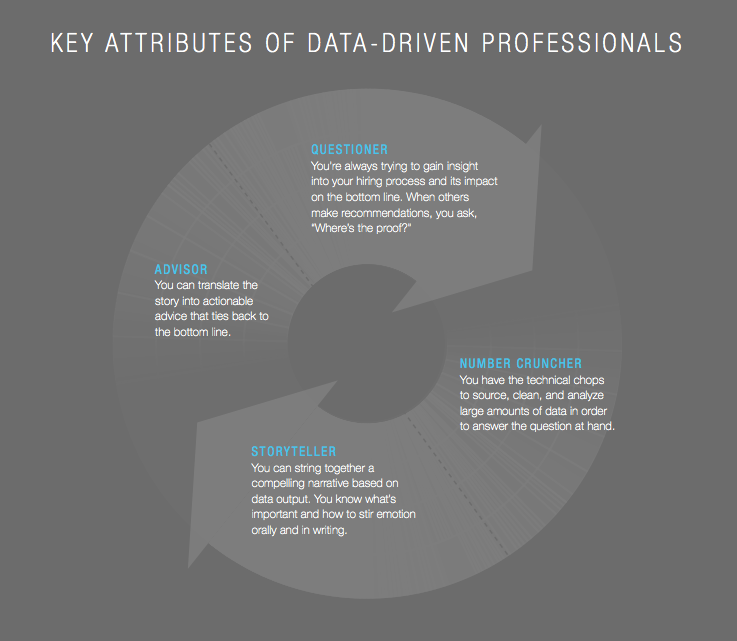 LinkedIn Global Recruiting Trends 2018
LinkedIn Global Recruiting Trends 2018
4. ARTIFICIAL INTELLIGENCE
This next-generation technology helps recruiters work faster by automating administrative tasks, and smarter by generating insights they wouldn’t think of alone.
Challenges of AI recruiting
Many recruiting professionals fear AI is going to take their jobs. But this assumption is not accurate.
AI doesn’t replace hiring professionals, it empowers them.
AI augments their jobs by analysing more information faster and smarter than they could ever do alone. It automates low-level tasks so they can focus more time on recruiting strategy and candidate relationships. LinkedIn’s research showed AI was least likely to replace the parts of the job that require personal and emotional engagement.
“Companies still need people — people to persuade and negotiate, to understand candidate needs, and to build communities and cultures. Paradoxically the more you use the technology, the more you can invest in the human side of the job.”
Artificial Intelligence supports companies as follows:
- 58% to source candidates;
- 56% to screen candidates;
- 55% to nurture candidates;
- 42% to schedule candidates;
- 24% to engage candidates;
- 6% to interview candidates.
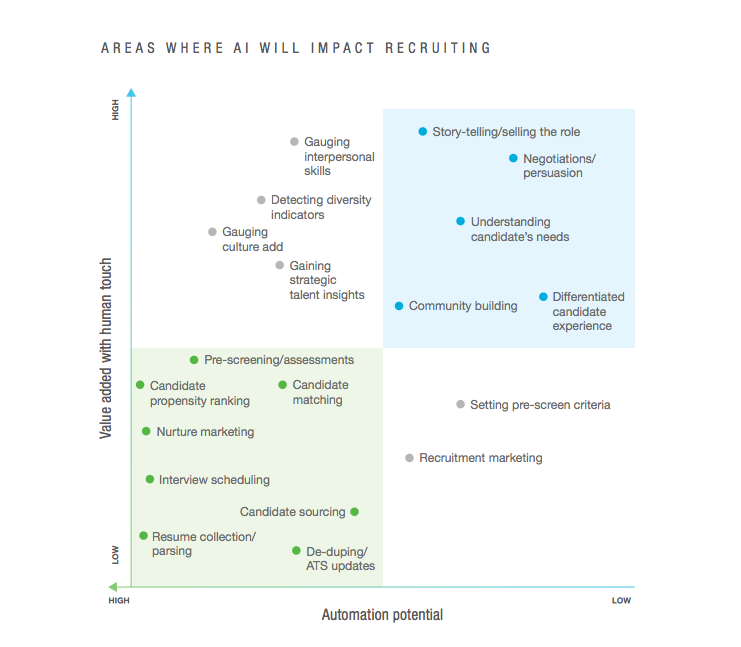 LinkedIn Global Recruiting Trends 2018
LinkedIn Global Recruiting Trends 2018
Companies using Artificial Intelligence in their recruiting process:
- Intuit developed an algorithm-driven digital platform that scores and prioritizes candidates based on the profiles of its top performers;
- Vodafone used AI-powered software to screen its videos: based on role requirements, other candidates, and top performers at Vodafone, the machines assess candidate suitability;
- Deutsche Telekom AG used a chatbot to answer questions that potential applicants have about posted job offers: filtering out candidates who were not relevant (based on chosen criteria) and telling those poor-fit candidates that their chances of getting hired were low so applying wouldn’t be recommended.
“Recruiting can and should include tech—without making myself redundant. It lets me go back to being human as an HR person again.”
Anna Ott,
HR Expert, HUB:RAUM
Benefits and results of AI-based recruiting:
- 67% saves time;
- Bigger talent pool;
- 31% delivers best candidate matches;
- Better ability to assess soft skills;
- 43% removes human bias;
- Better candidate experience
- 30% saves money;
- Higher recruiter efficiency.
Five steps to build your professional brand online
We live in a very competitive business environment driven by digital transformation. It is increasingly difficult to stand out and be recognised as a professional.
That’s why you need to build a professional brand online.
Your brand can help you attract clients and business partners, support you to separate yourself from your peers and establish yourself as an expert in your field.
Here are five steps to build your professional brand online:
1.Leverage your LinkedIn account
LinkedIn is the most popular business-oriented social media platform: the latest statistics show there are 500 million users on LinkedIn.
So instead of browsing your Facebook newsfeed early in the morning, over coffee, start your day by checking your LinkedIn account.
Here are our tips&tricks to help you make the most out of your LinkedIn account:
- show a professional profile picture: friendly and approachable, but not casual
- show your two most recent employment position; LinkedIn statistics revealed it’s 12 times more likely to be found in searches if you keep your resume updated
- customise your profile headline to show your expertise
- use your LinkedIn background photo (the space above your profile picture) to talk more about yourself and build credibility: don’t use stock photos, create your own image
- customize your LinkedIn url – linkedin.com/in/yourfullname; LinkedIn has a high Google Page Rank and this means you will increase your chances to get found in searches; add your personalized link to all other social accounts, email signature, blog, etc
- tell your story using the Summary and Experience sections of your LinkedIn account: in the Summary section write about yourself as a professional, mention your interests and ambitions, write as if you were talking to someone you just met; in the Experience section detail your resume, show what you accomplished, what projects you worked on, what was your input and how you helped your team succeed
- publish posts and write articles on Pulse, LinkedIn’s blogging platform regarding your professional experience and lessons
- find your industry peers and comment on their posts
- use posts and articles related to your professional field and post relevant comments
- find relevant professionals and invite them to your network
For more actionable tips to improve your LinkedIn account and use it to achieve your goals, check LinkedIn’s blog.
2. Profile photo
How many social accounts do you use? Do you have a different profile photo for each of your accounts? Would someone who doesn’t know you in person feel confused?
Use the same profile photo on all your social accounts, email signature or blog profile.
This helps you show consistency, get recognised more easily and more importantly, it adds unity and strategy to your brand.
3. Show your work
If your work is visual, create a website to display your creations.
If you feel comfortable talking in front of a camera, start posting video content on your social accounts.
If you express yourself easily on paper, start a blog and write about your experiences and your professional projects.
Do you have a particular take on the latest news? Turn to your blog and write about your perspective then post your articles or content on all your social media profiles.
4. Be active on Quora
Quora is one of the largest questions and answers sites on the internet today.
It is an excellent platform you can use to build and grow your professional brand. Use it to establish yourself as someone who knows a lot about his or her industry and, just as importantly, could explain it to other people.
How to use Quora:
- search your field hashtags
- search for questions relevant to your domain or niche and answer them
- give advice, offer relevant insight
- be helpful and consistent
5. Start your own professional side projects
Professionals differentiate themselves by their side projects. Side projects are the best way to showcase your skills and abilities.
Your project can be a subject-focused Instagram account or a blog. It can involve photography or video or writing. Or you can do voluntary work helping your favourite charity organisation. There are so many creative tools you can use to express yourself and show how you can add value.
Feeling uninspired? Check out 51 coolest side projects!
Conclusions
Your personal brand is not about exaggerating or showing off.
It is about showing how you can add value and insight.
Establish yourself as a thought leader in your professional area.
Get your thoughts and opinions out there, but be true to yourself.
Remember: professional branding is a long-term strategy!
